“What is there for us to see today? We saw Antarctic Glaciers just last January. It’s going to be tough to top that!” Judy and I said to each other this morning. But the Vatnajokull Glacier, the largest (by volume) in Europe, and especially the drive to and from it, was special and worth the trip even for jaded glacier wonks like us.
Vatnajokull has five active volcanoes under its ice sheet. They erupt periodically, emitting large quantities of water, ash and toxic gases. We saw evidence of volcanic activity all day long. For example, the 1918 eruption near Vik extended the Icelandic shoreline two miles out into the ocean.
Arguably the most deadly eruption, the so called Saftárelder (Fires of Skaftá) in 1783, created a crater 18 miles long. The impact was extensive and widespread.
– The volcano ejected lava, of course, the results of which we saw today in the form of lava fields and mini craters 28 miles from the epicenter: large areas of rock covered today with a thick layer of moss. With time, plants and eventually tress will grow where the moss has prepared the way. But judging from the 260-odd years of moss growth, we’ve got a few more centuries (millennia?) to wait.
– The volcano also ejected ash and toxic gasses that caused teeth of man and beast to fall out. Seventy five percent of Iceland’s cattle and 22% of the population died. The economy of Iceland, already poverty stricken, was made even worse.
– The ash cloud spread over Europe. Unlike the 2010 event, this one had thin lightweight ash particles that remained suspended over Europe for years. Poverty and starvation ensued. The citizenry of France, already less-than thrilled with the monarchy, started the French Revolution.
Thor told the story of the Starla, the wanderer, who came to live with a family in this area. He had a premonition of a 17th century eruption. The parents ignored him but one night he took the kids to the top of a nearby hill. Sure enough, the eruption occurred, the waters came and engulfed the hill on which he and the kids were standing. An iceberg floated by. Starla jumped on with the kids, a cow, some sheep and a horse. He returned to rebuild the farm and live happily ever after. Kinda tough on the parents, though.
Thor regaled us with several legends and stories drawn from Nordic mythology. Some revolved around the striking similarities between human and seal physiology. Both have internal bone structures and enchanting eyes. One man, in the 1980s, I believe, had two layers of dark fat, just like a seal. He survived hours in frigid waters that killed his companions in minutes. About this time of year it is said that seals shed their skins for a day and take on a human form. And so on.
We saw in the distance the island where the first Viking settler landed. Seems he was anxious to chose a settlement site pleasing to the gods. So he took his two totem poles, lashed them together and threw them in the sea, asking the gods to show him the way. It took him several years, but he eventually found them near present day Reykjavik and that’s where he set up shop. Reykjavik’s symbol is two poles crossed by ocean waves.
We drove today to Jokulsarlon Glacier Lagoon, about three hour’s drive from our hotel in Vik. Along the way we saw one outlet glacier after another. Imagine a giant ice sheet sitting atop a mountain range (really a range of volcanos with intervening lakes beneath the surface of the ice). The pressure of the ice causes the ice to flow downward wherever there is a valley between volcano peaks. These tongues of the main glacier eventually reach lower elevations and flow towards the sea. Those are Vatnajokull’s outlet glaciers.
The Jokulsarlon Glacier Lagoon started forming in 1934 as Vatnajokull started to recede, as is happening to many glaciers around the world. Today the lagoon is 11 square miles in size and over 800 feet deep. It is expanding at the rate of almost 1,000 feet each year. It’s home to a number of enchanting icebergs, which have calved off from Vatnajokull.
The lagoon is close enough to the ocean and low enough in elevation so that tidal waters flow in during high tides and the fresh water flows out at low time. The lagoon therefore has fish from the ocean and where there’s fish, there are inevitably seals. Check out the pictures to see the icebergs.
While these icebergs are no where near the size of what we saw in Antarctica, they have their own appeal and we enjoyed our up close and personal view of them from the Duck Boat very much.
On the way back we stopped at a roadside stop where we could view the moss-covered lava field up close. Judy, a Maine moss lover, was especially pleased to get up close and personal with Icelandic moss.
Just outside of Vik we stopped at the Black Beach. This beach has really black sand, created by the volcanic fallout. It also has striking vertical pillars of solidified lava. Puffins nest in the grass on the hillside and while we saw a number in the air we didn’t see any perched for us to view. We’ll keep trying. And while we didn’t see any Puffins close up, we did see numerous Arctic Skuas, the same birds we saw in Antarctica in January. They nest here in the spring and migrate south in the fall.
Dinner was at the Black Crust Pizzeria. The crust looked just like the sand at the beach but tasted OK as did the date-pesto-somethingorother topping.
More scenery and some music tomorrow, our last full day of touring with Sage.
‘

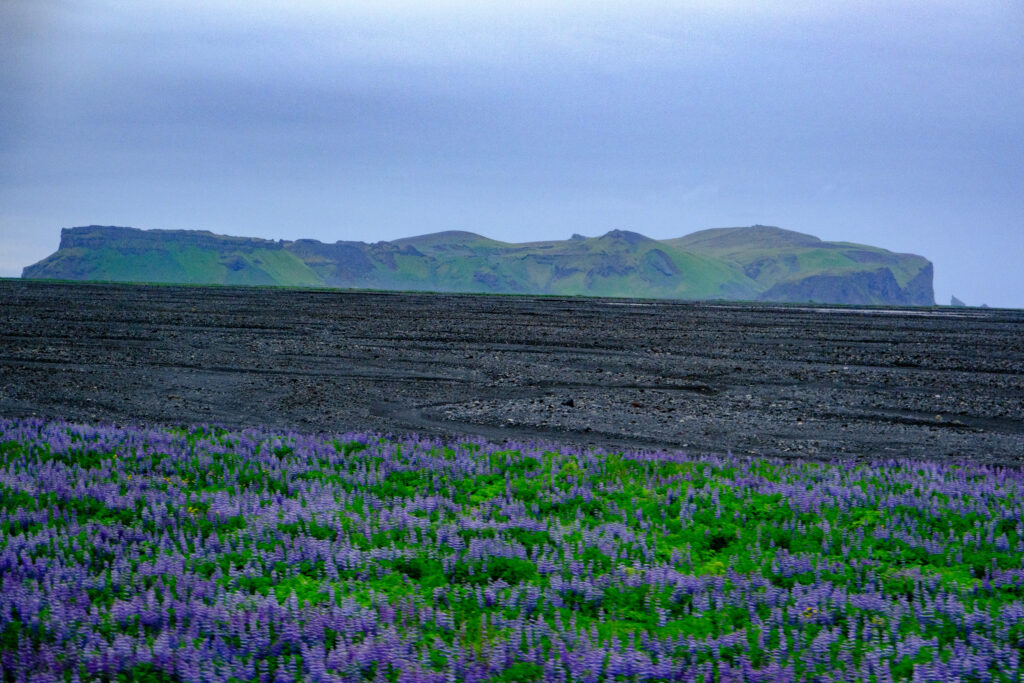
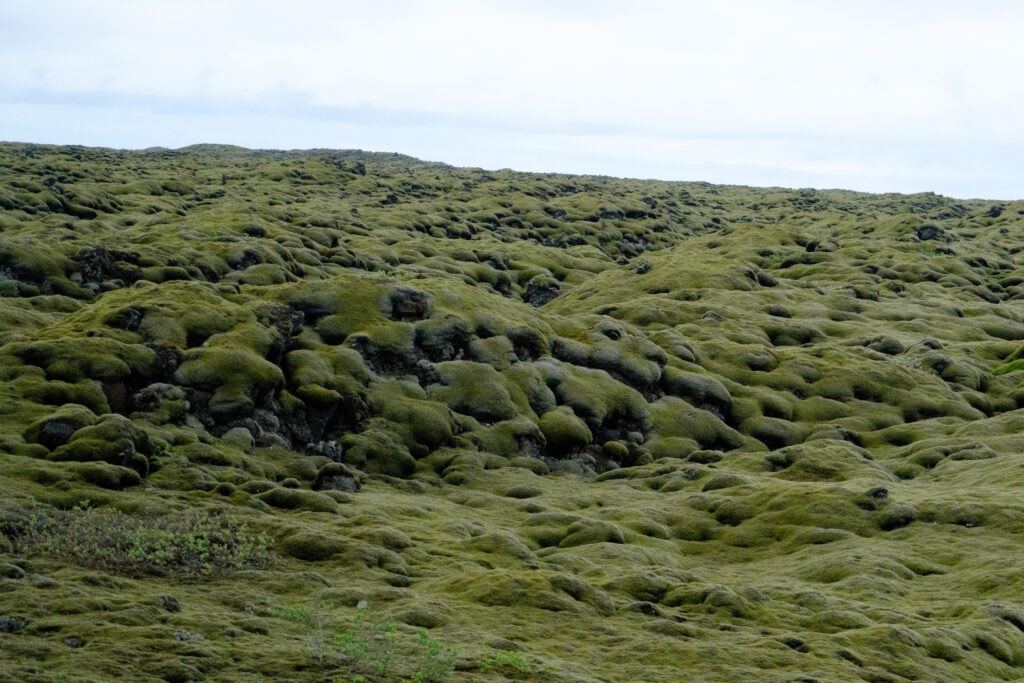

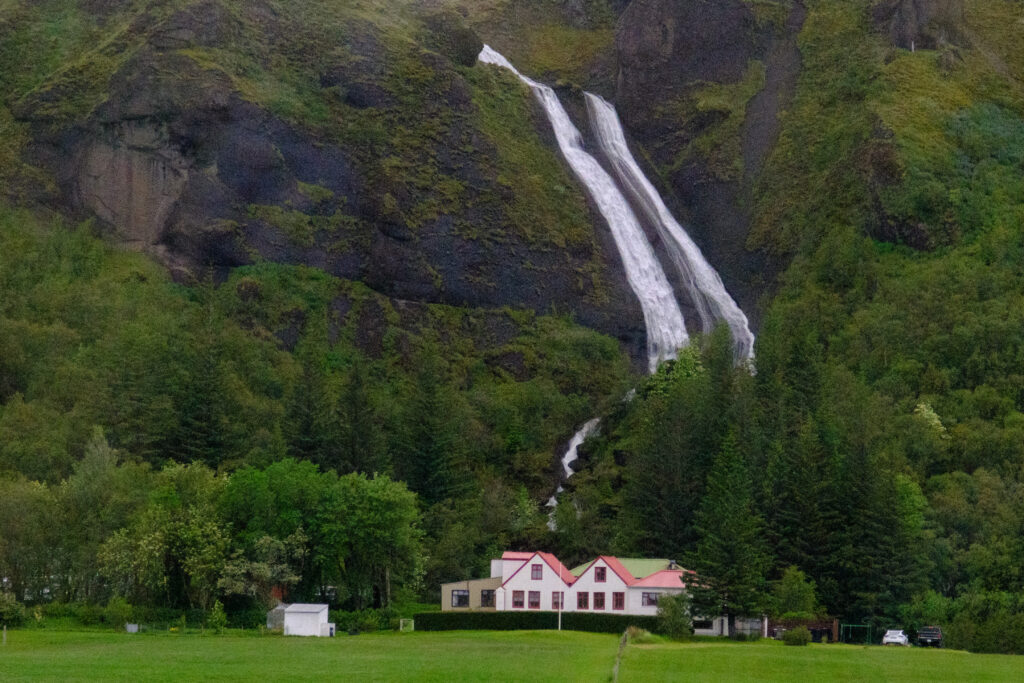
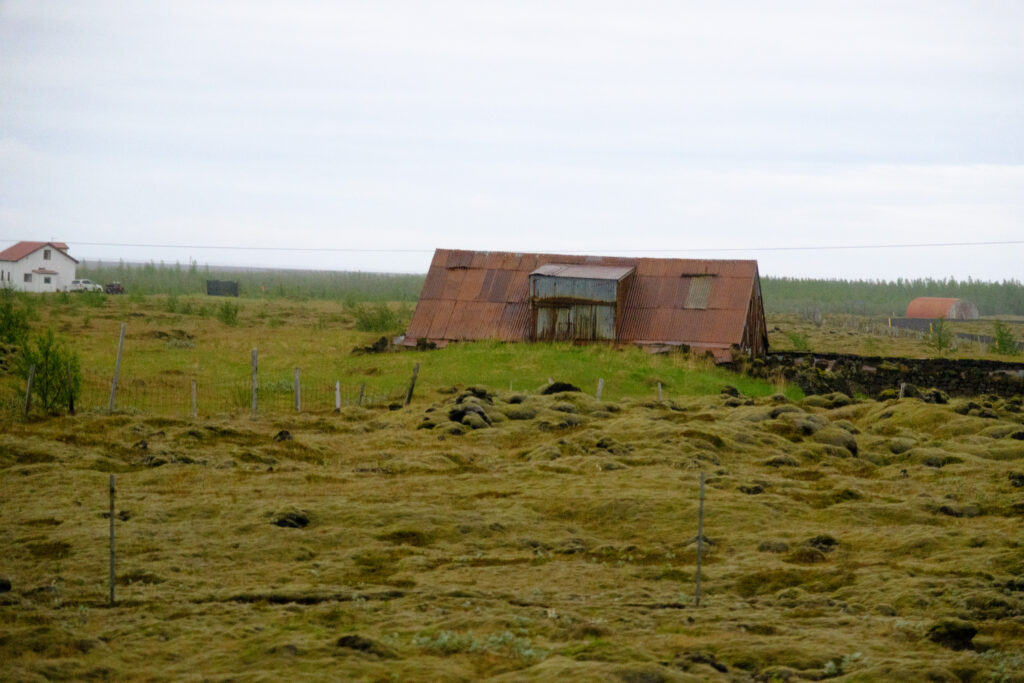
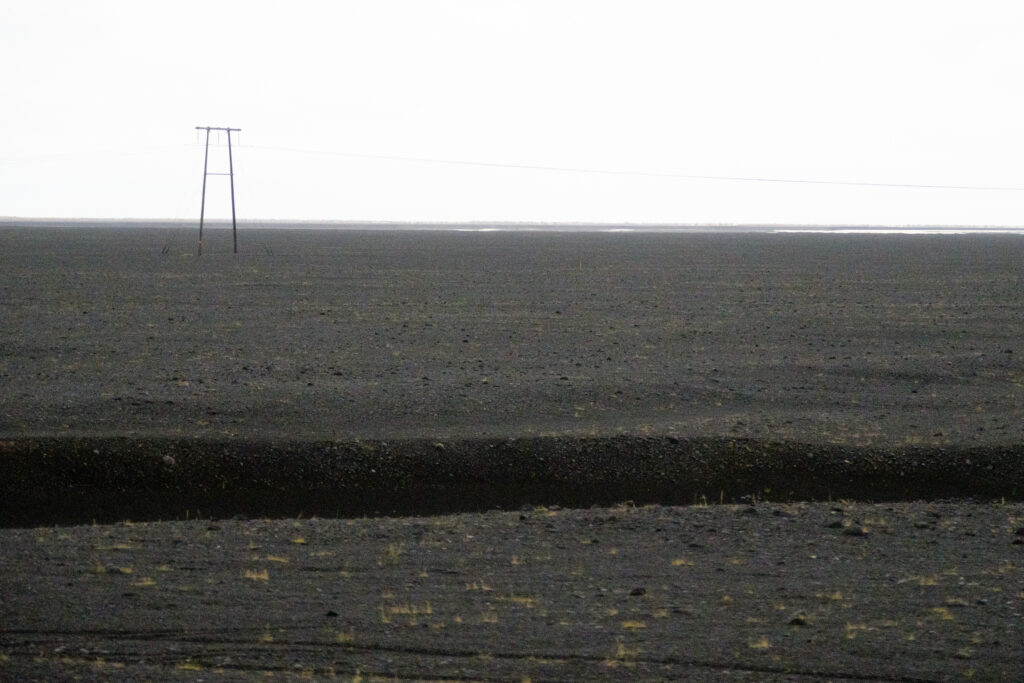
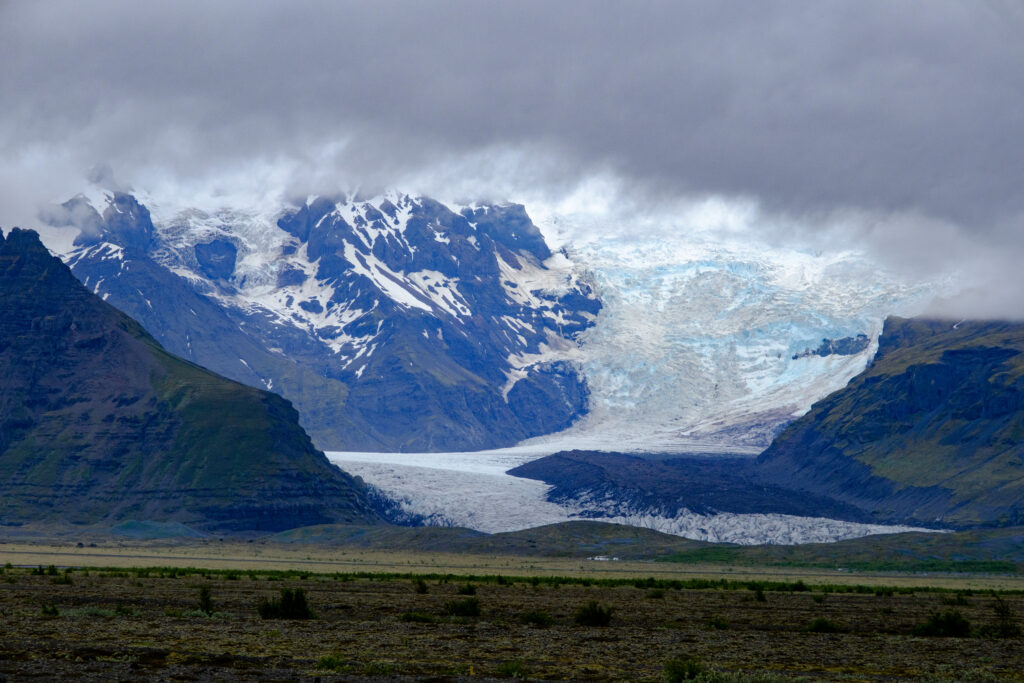

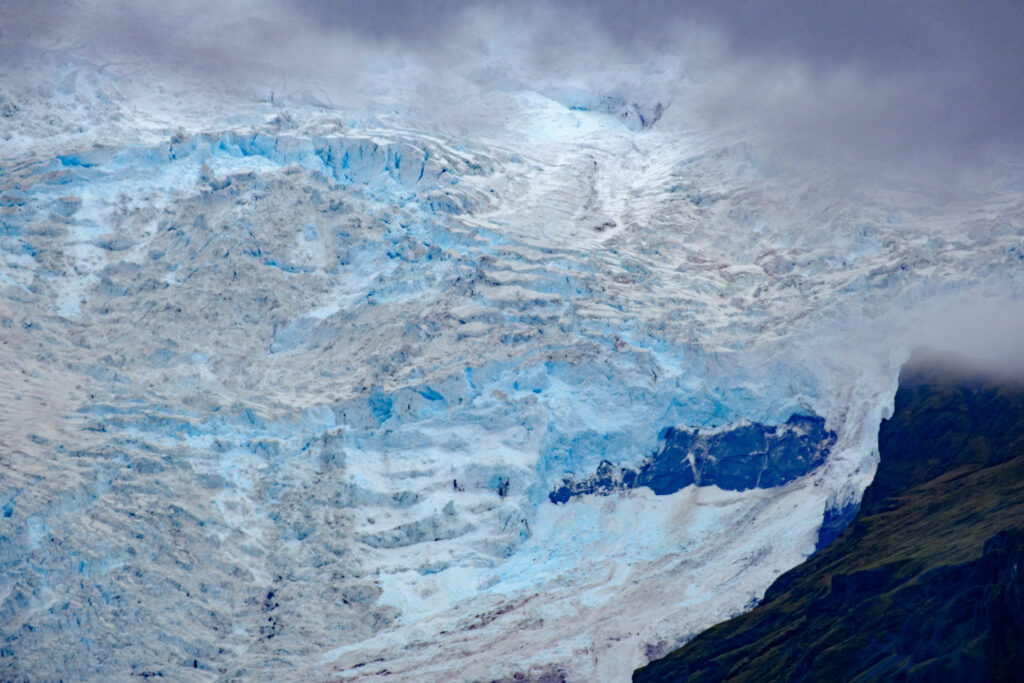
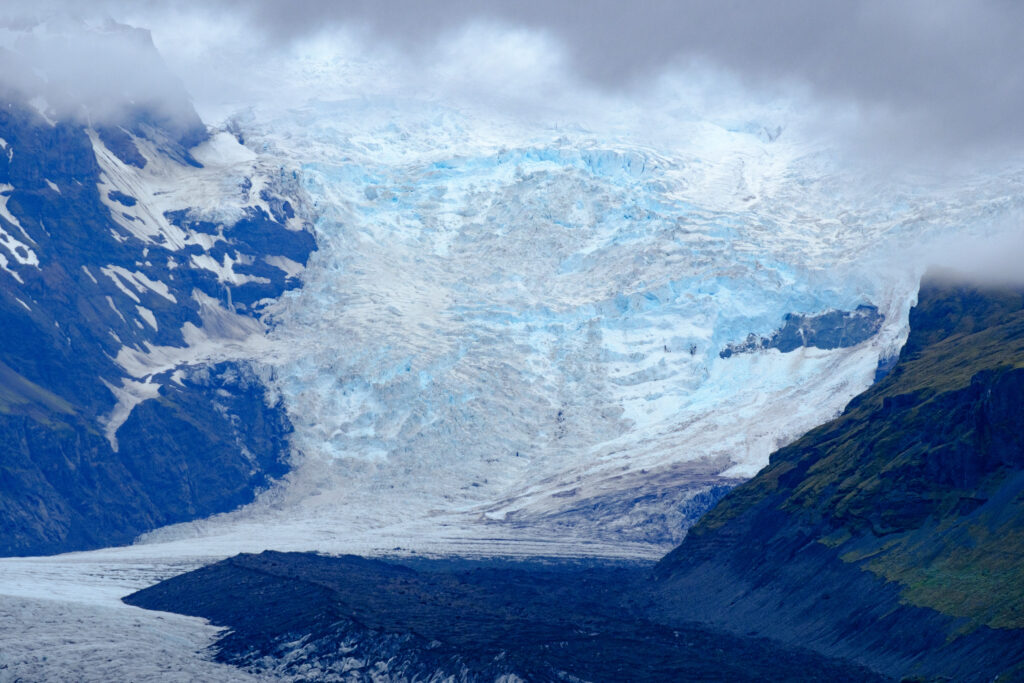
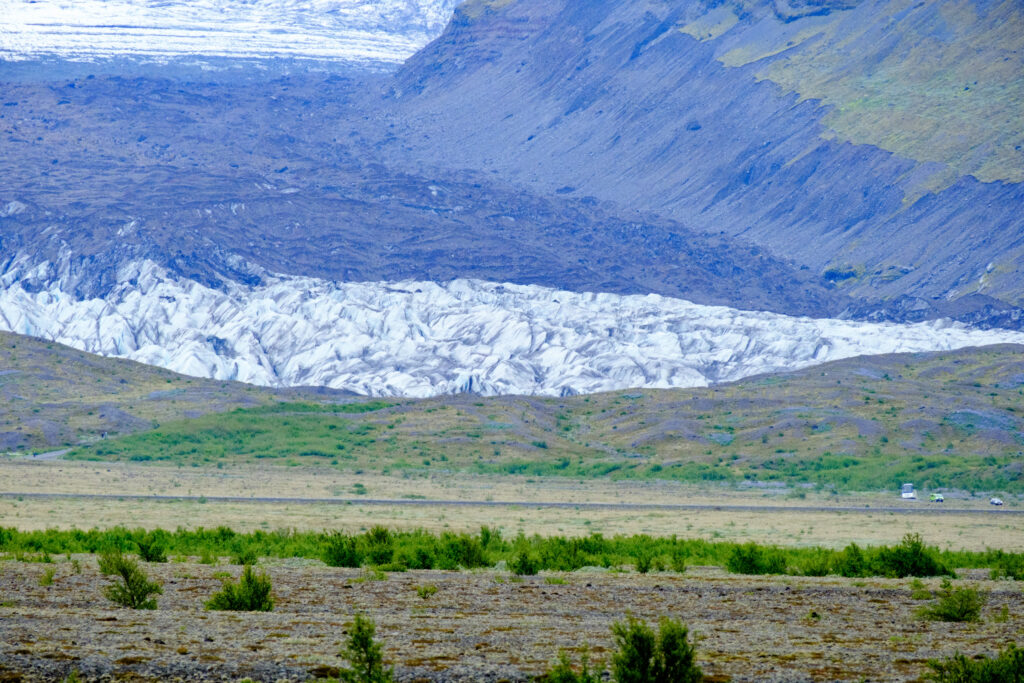
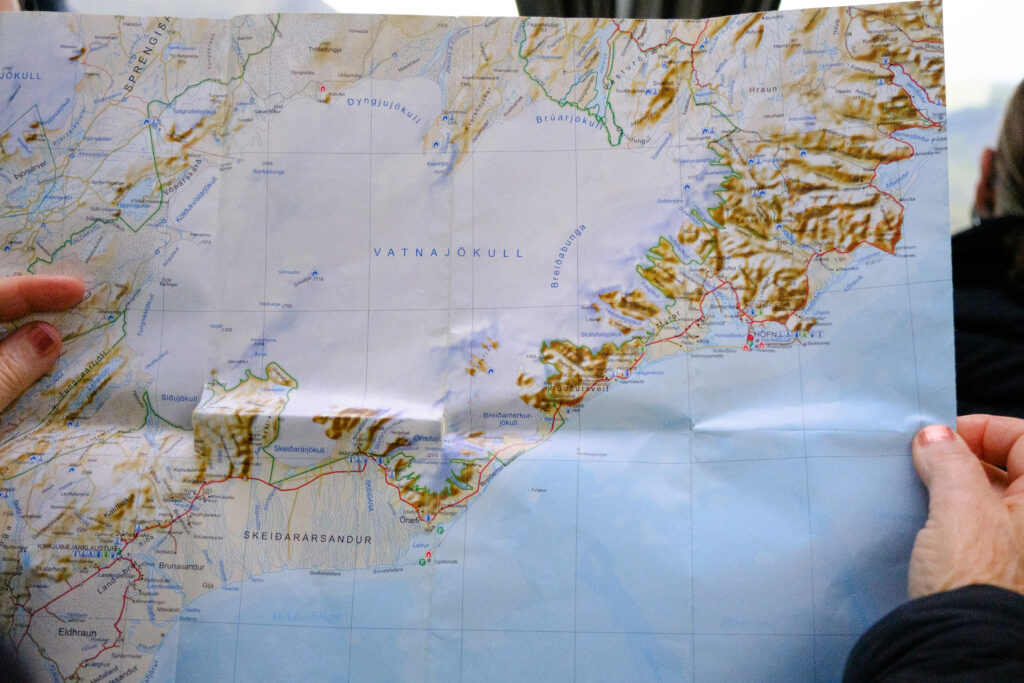
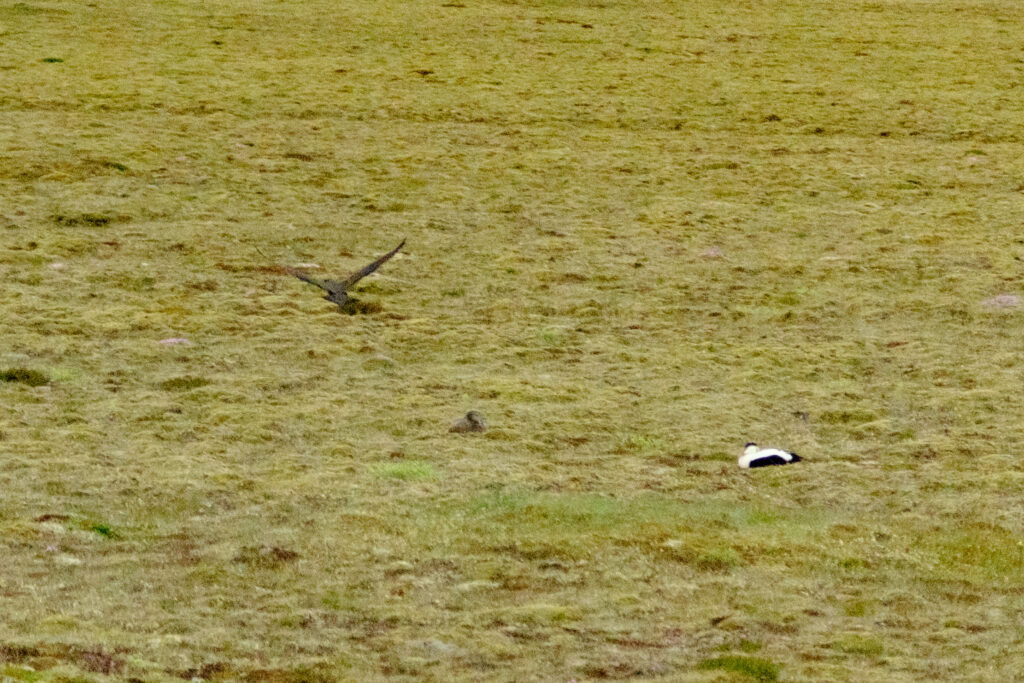
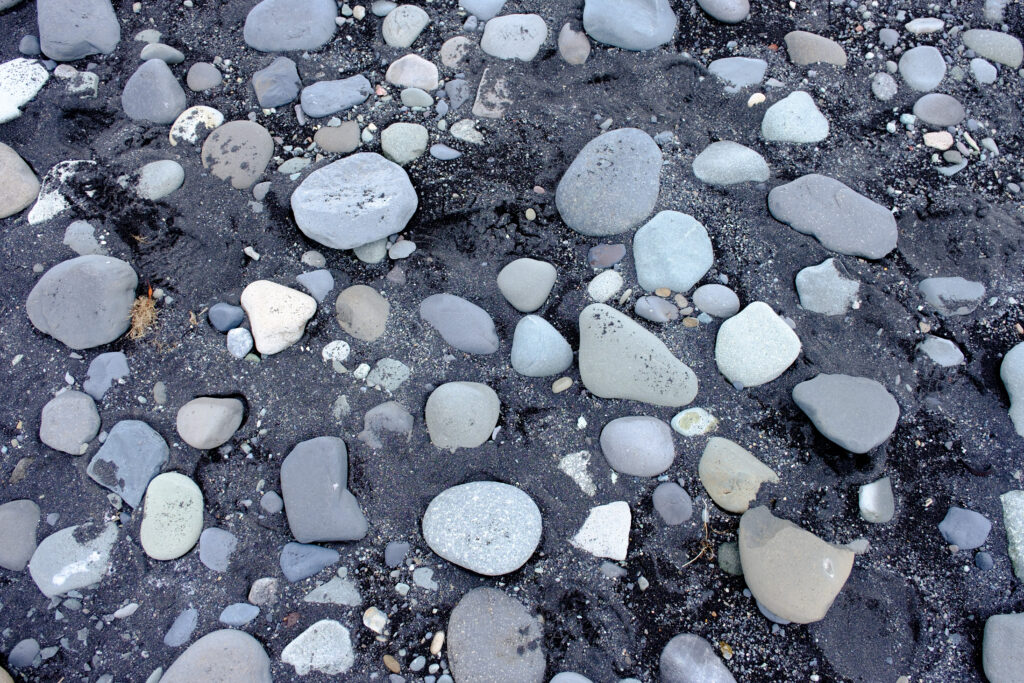
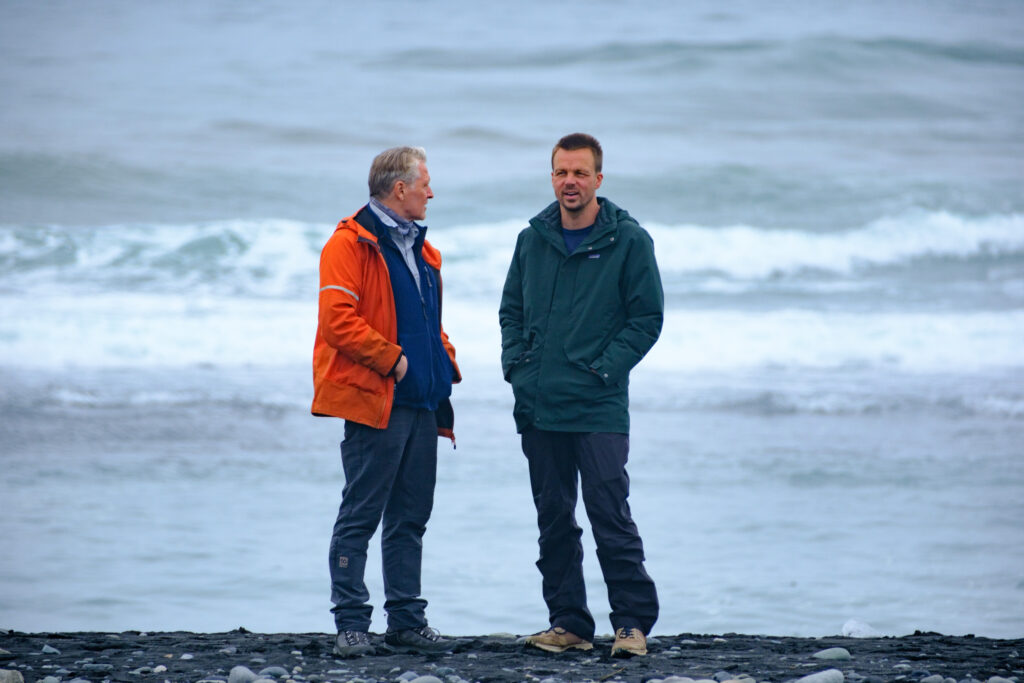
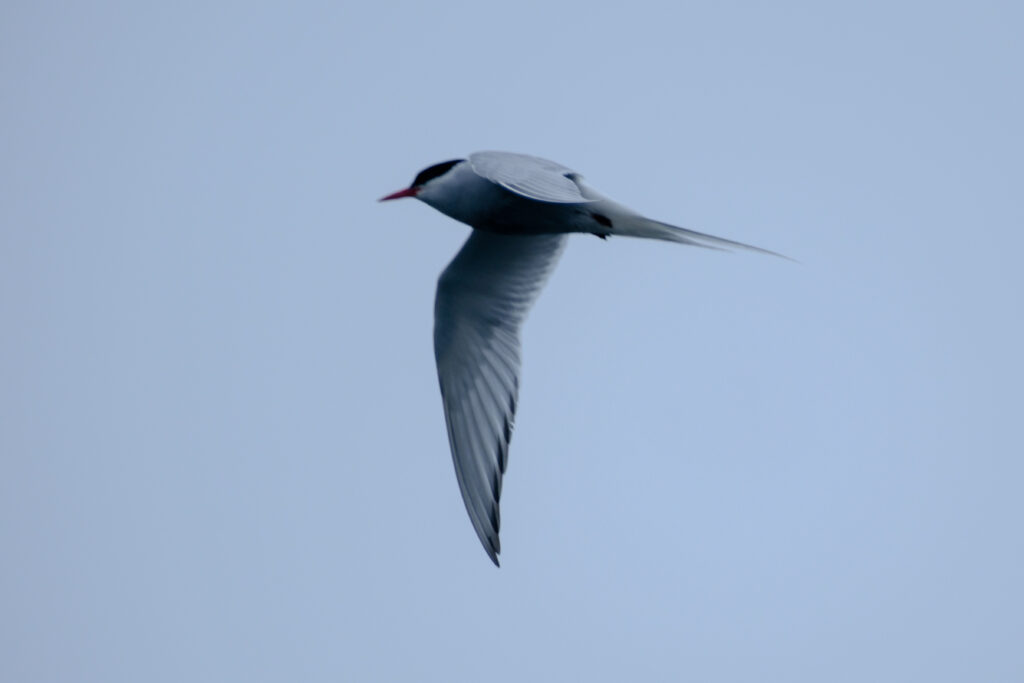
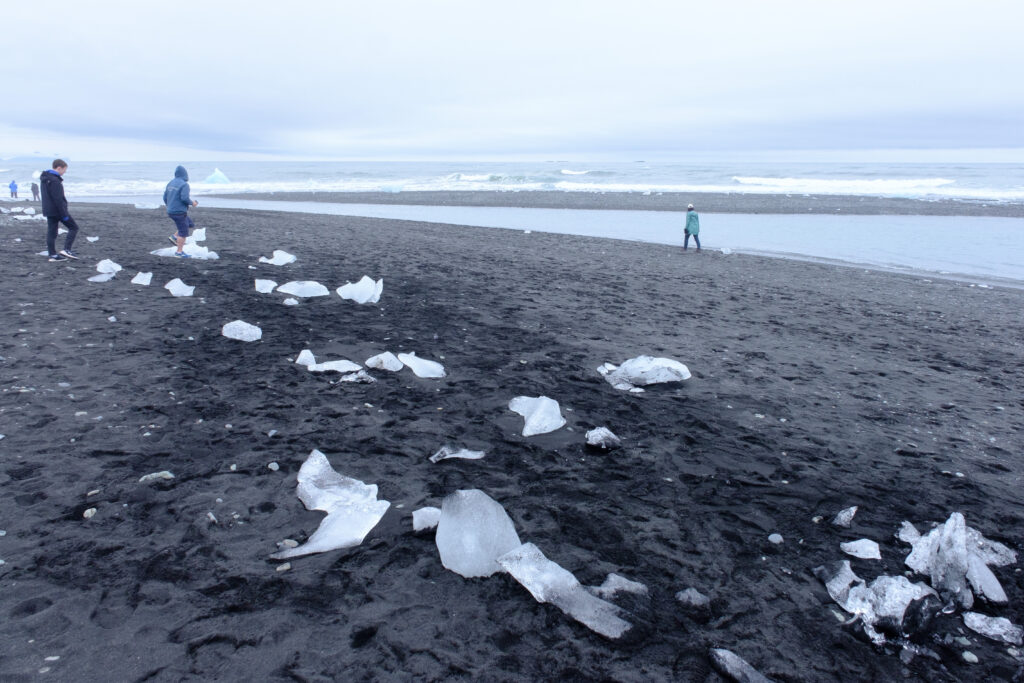
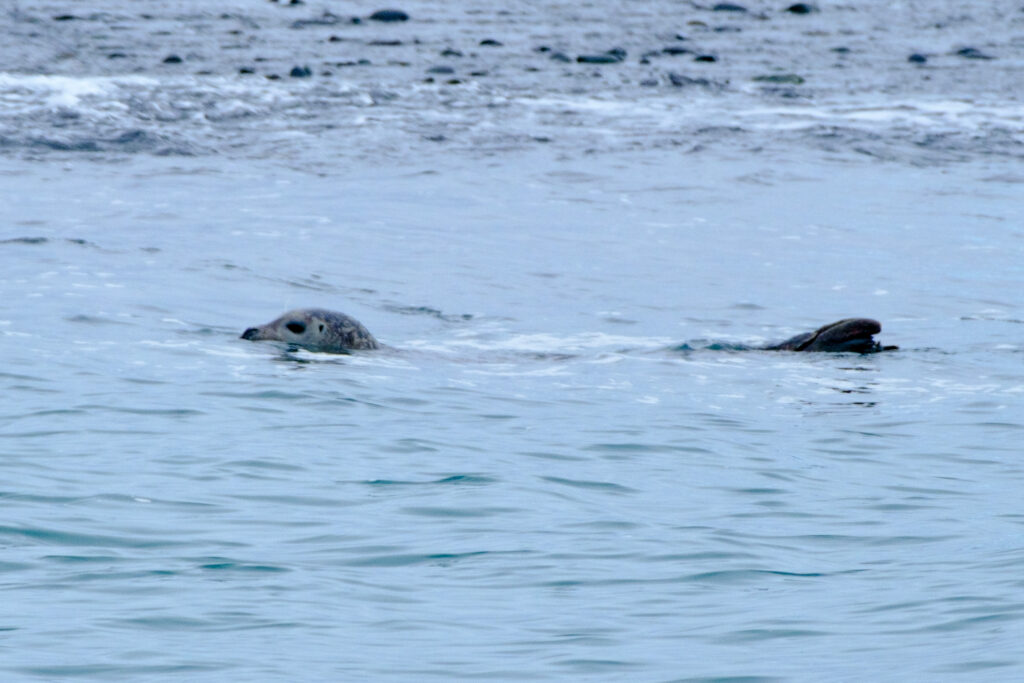
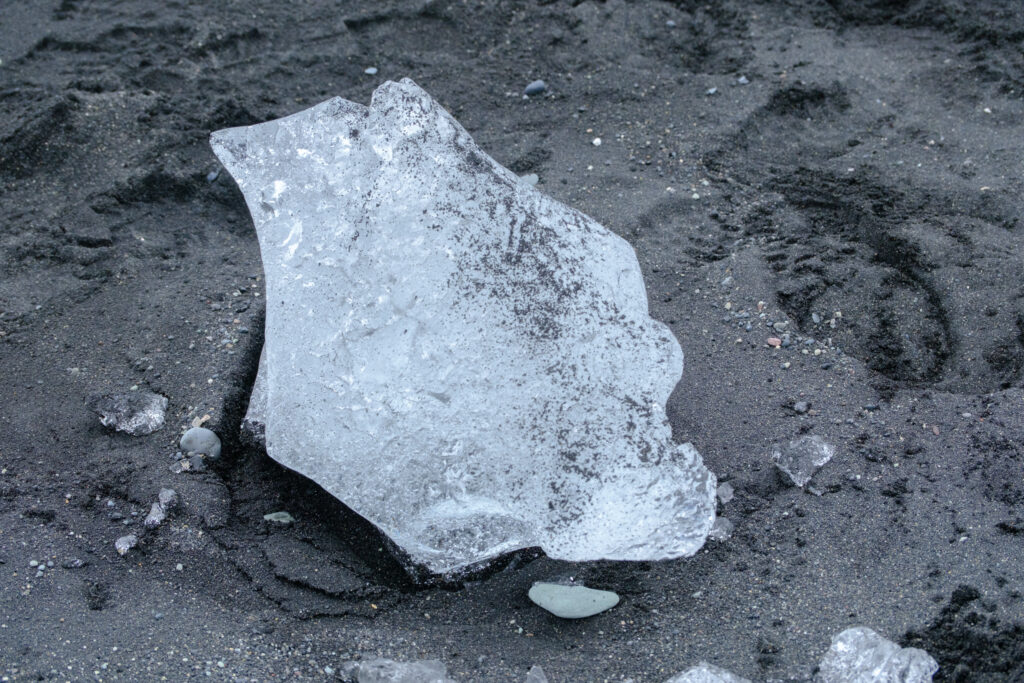
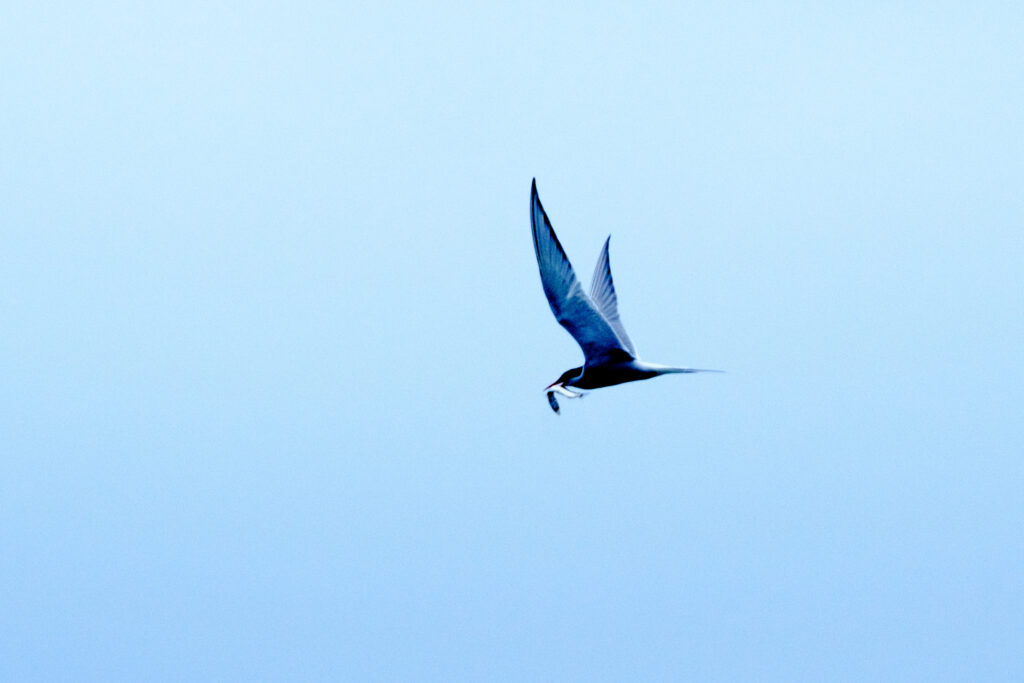
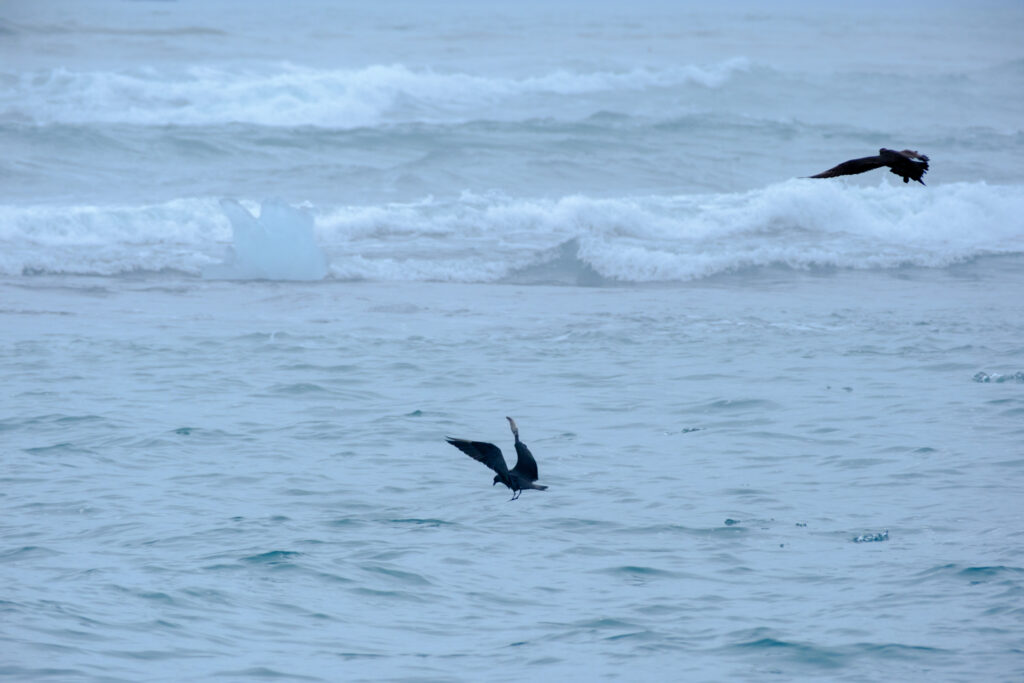


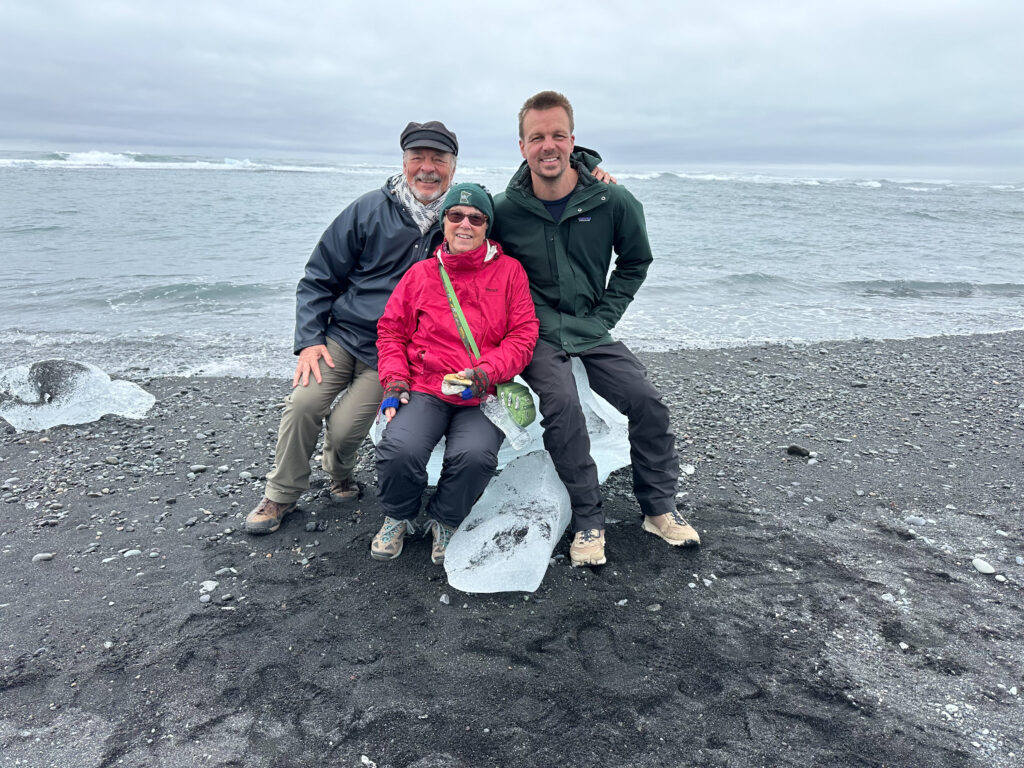
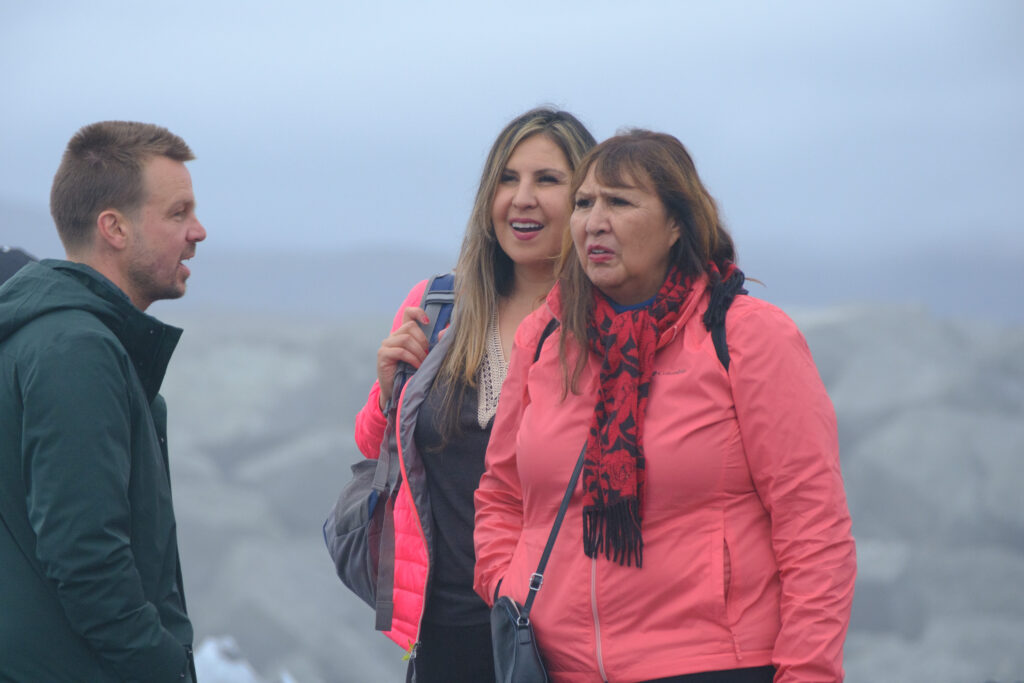
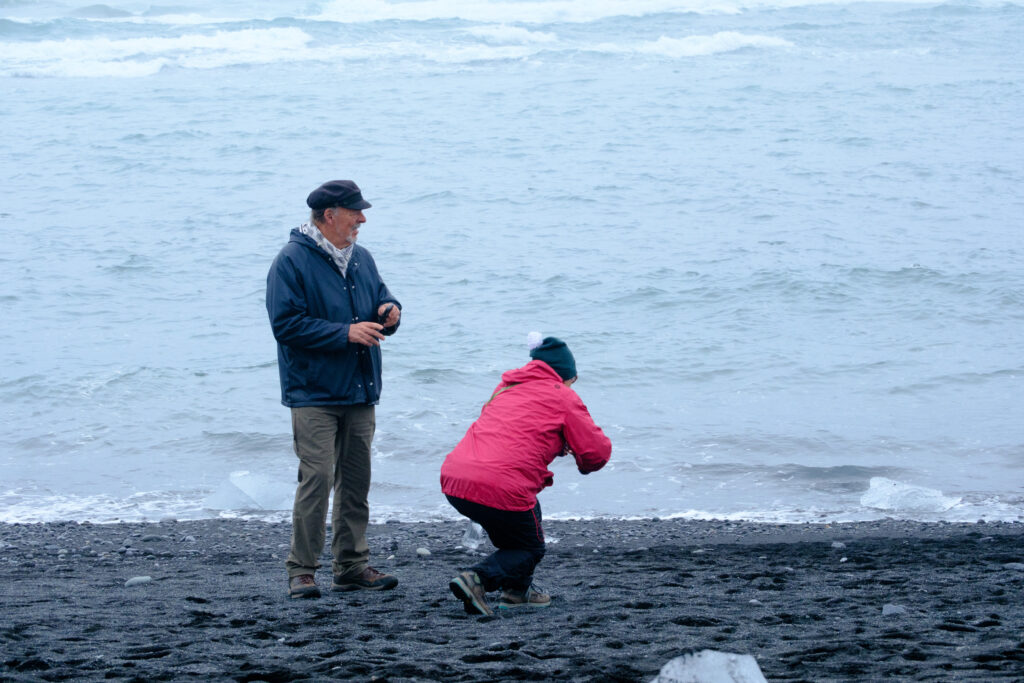
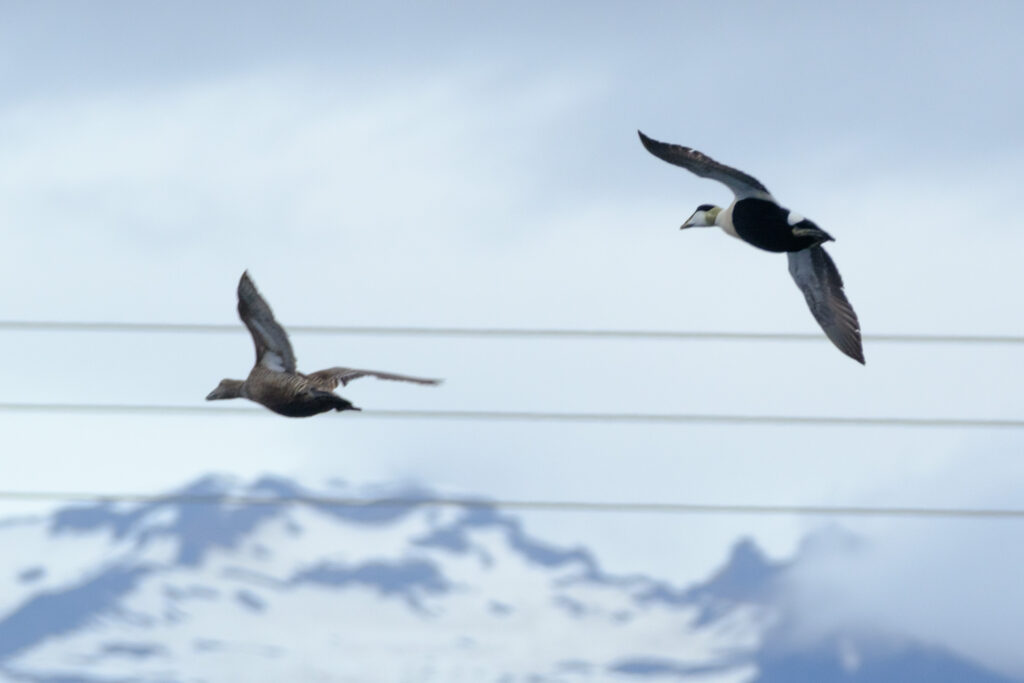
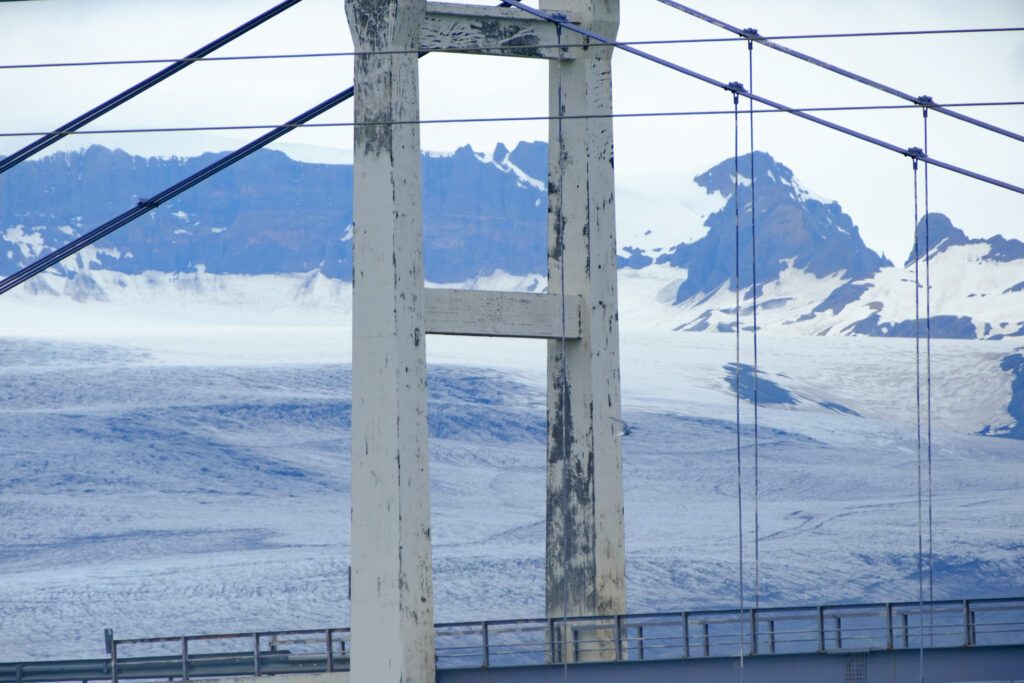
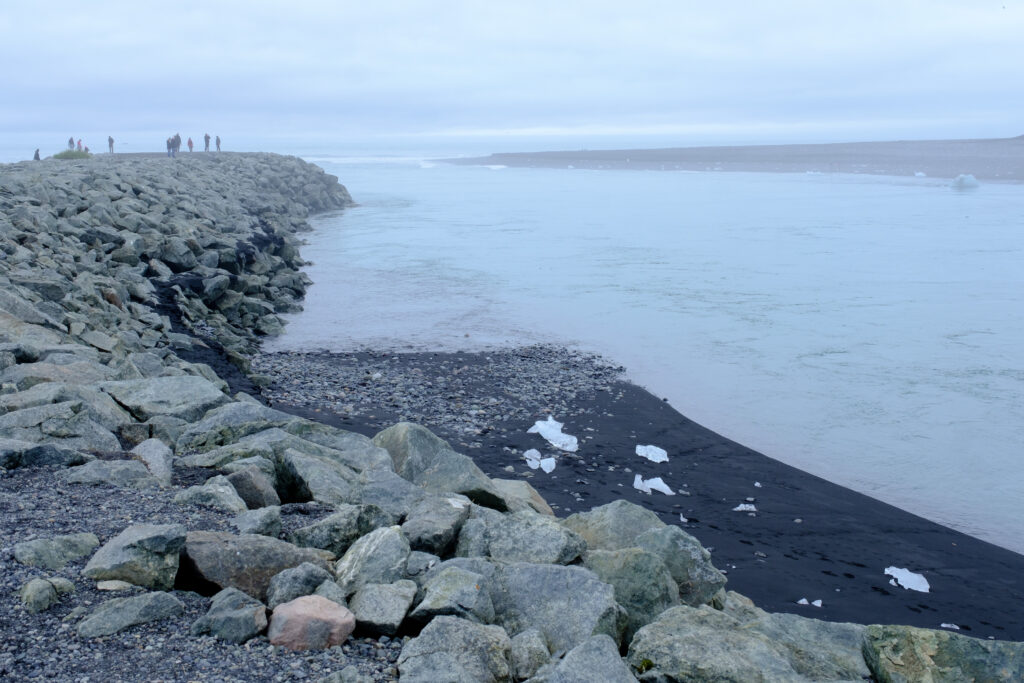
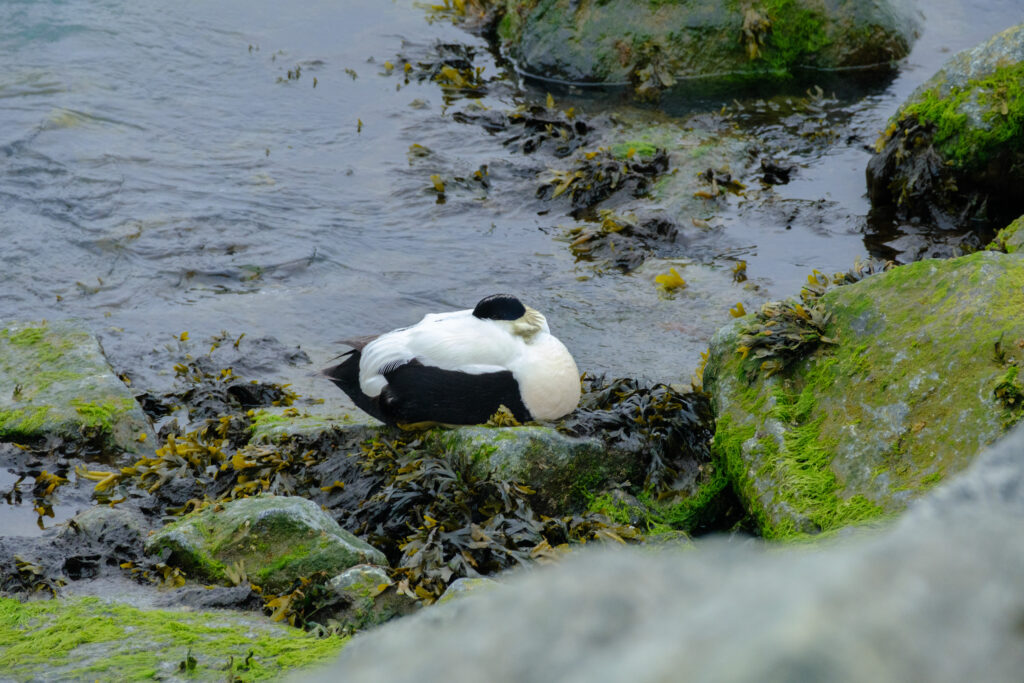
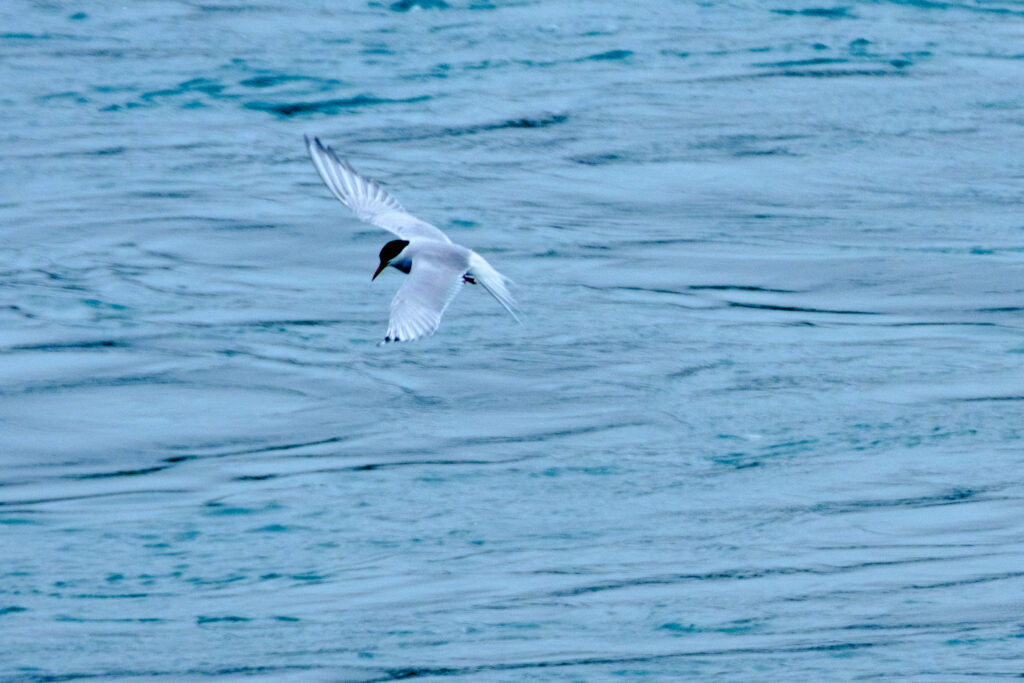
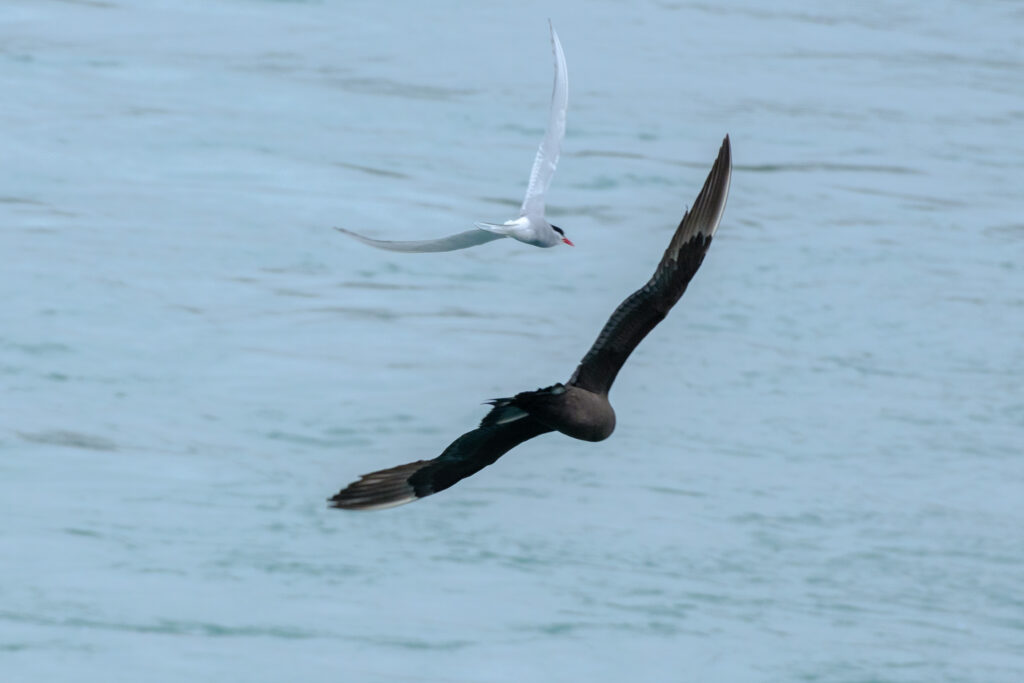
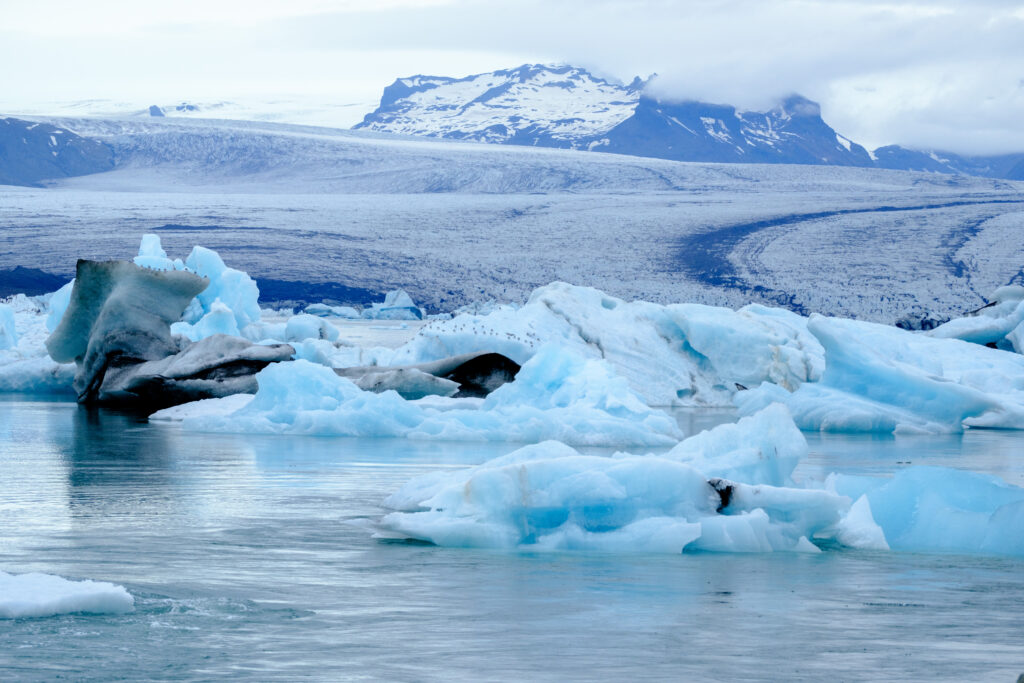


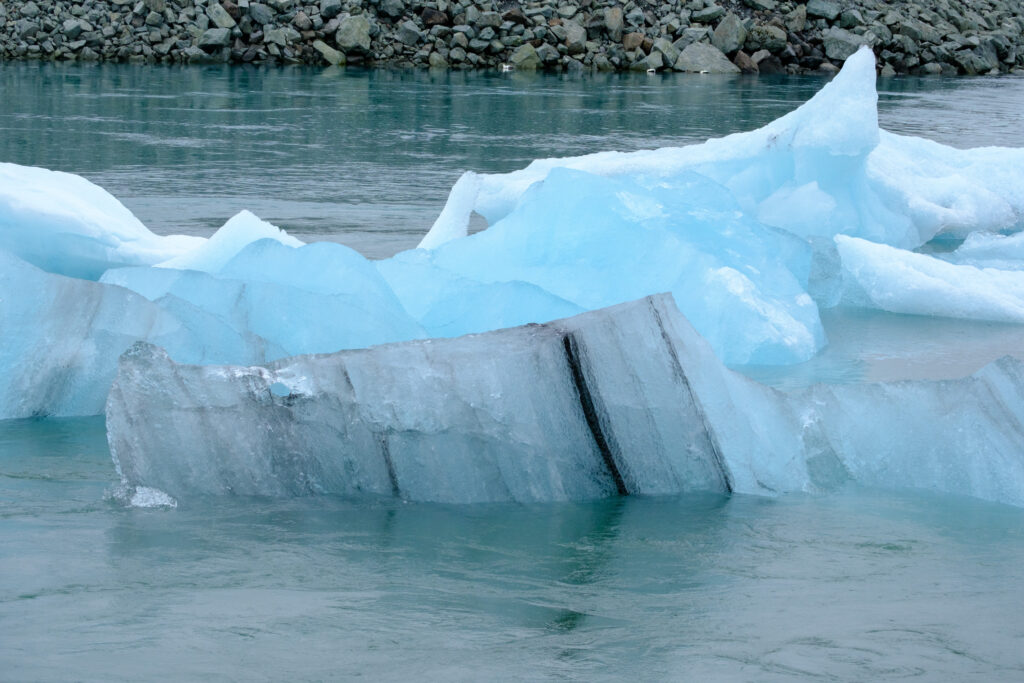
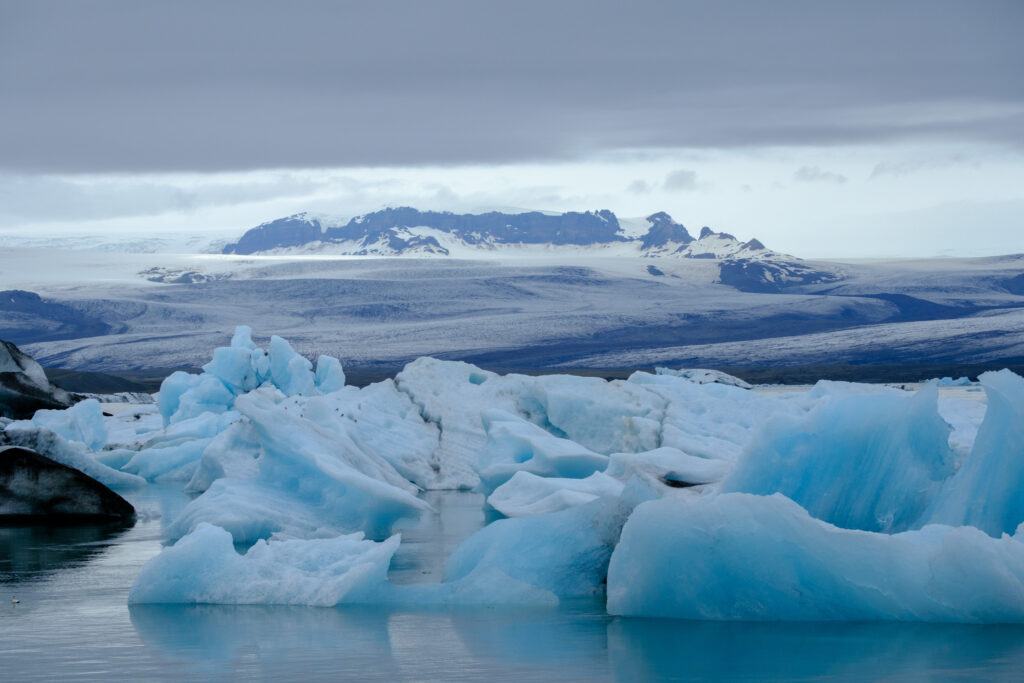
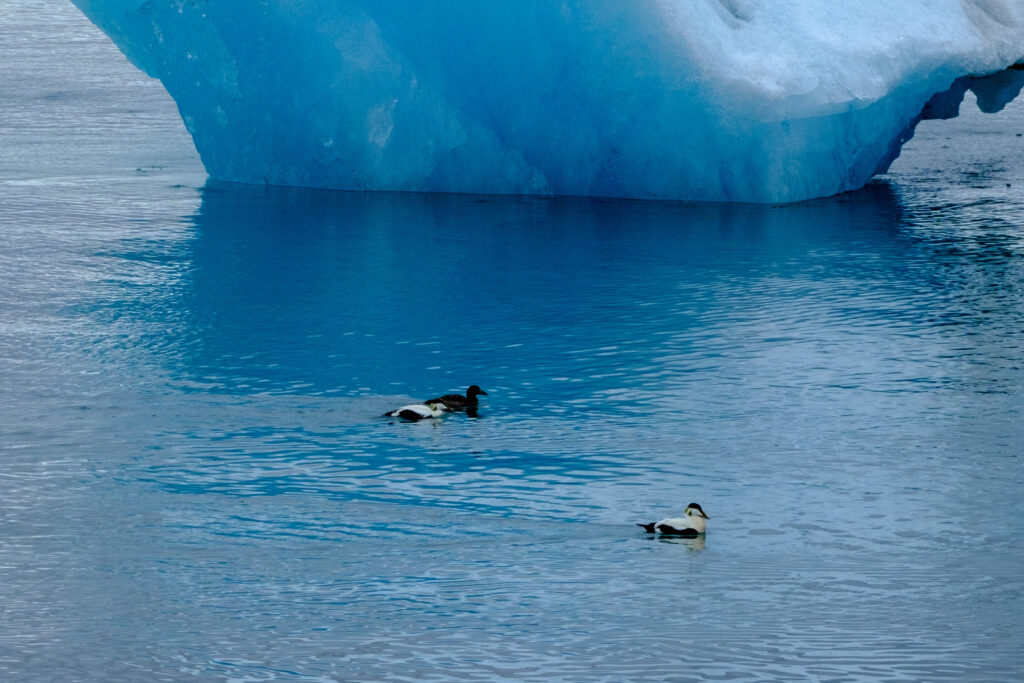

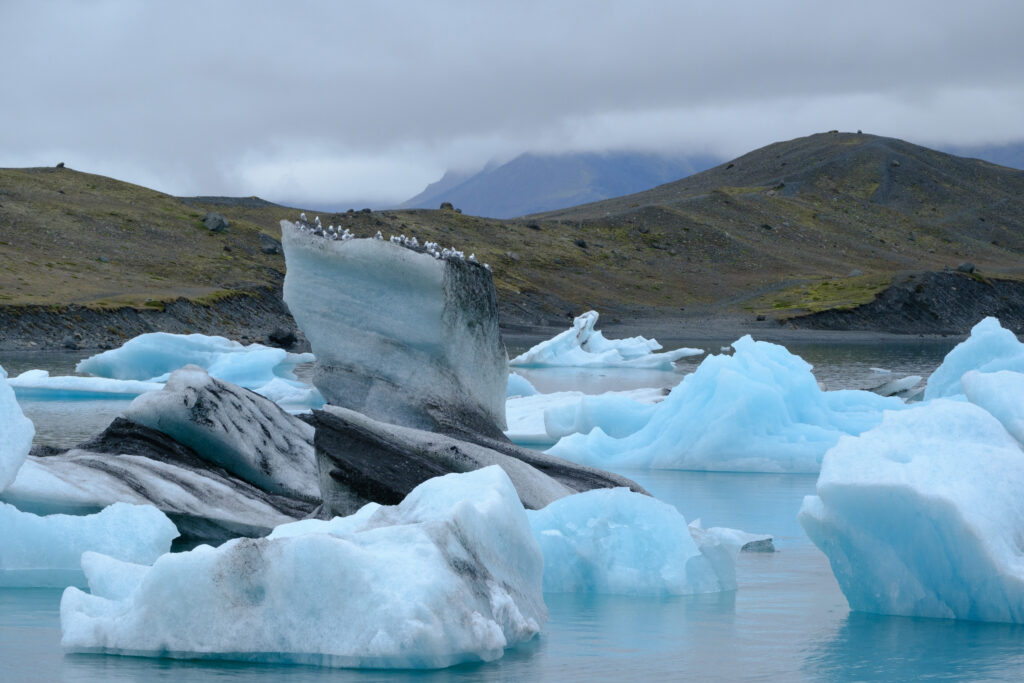
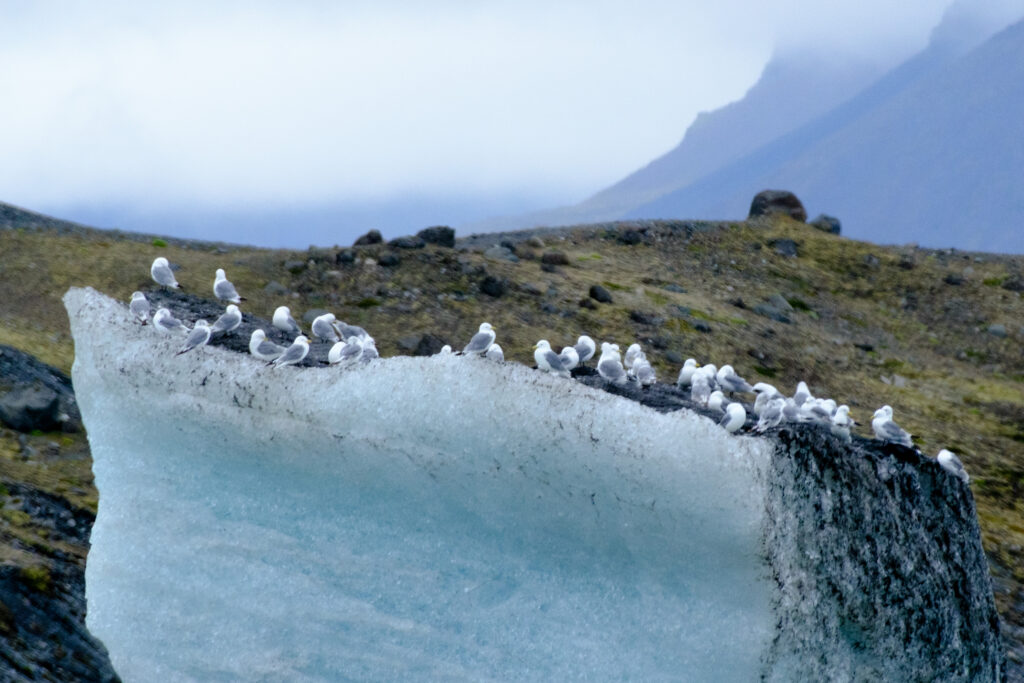
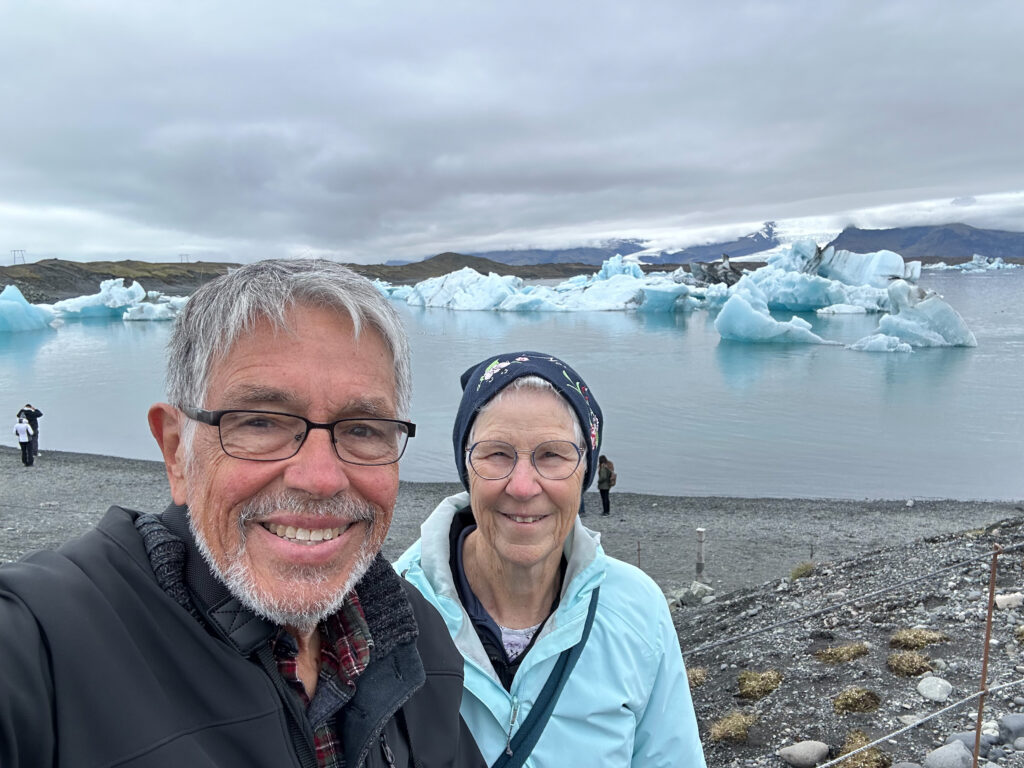
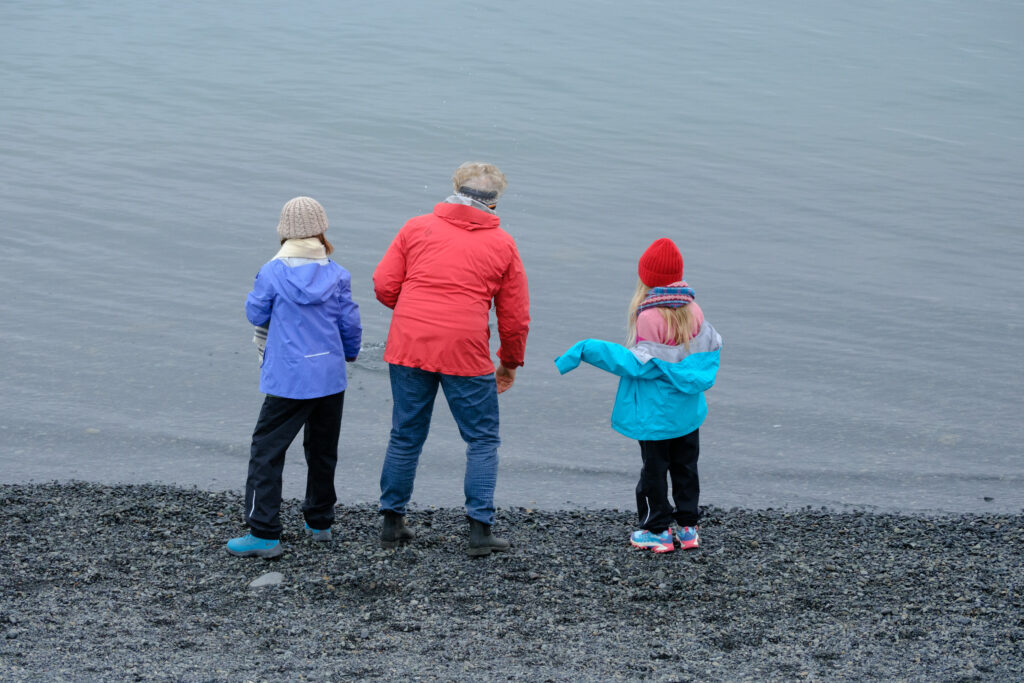
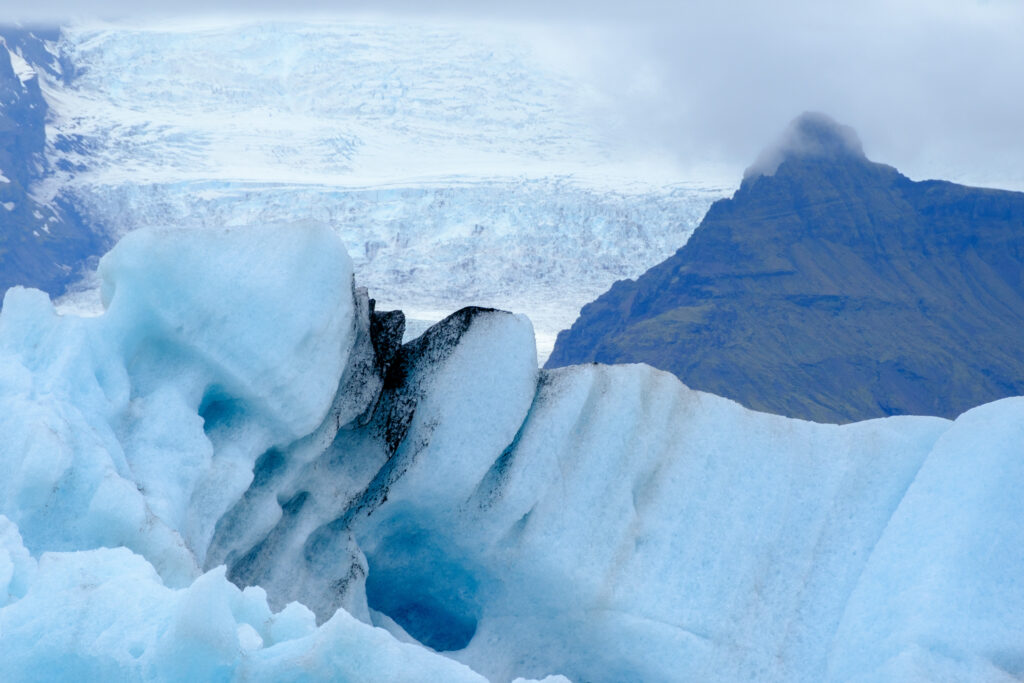
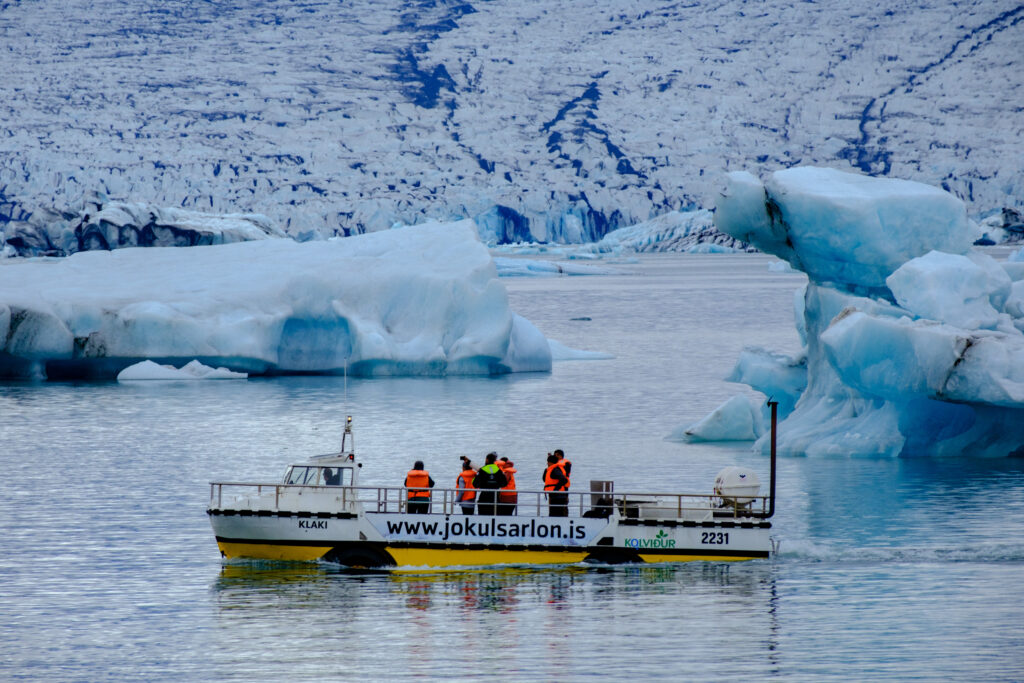

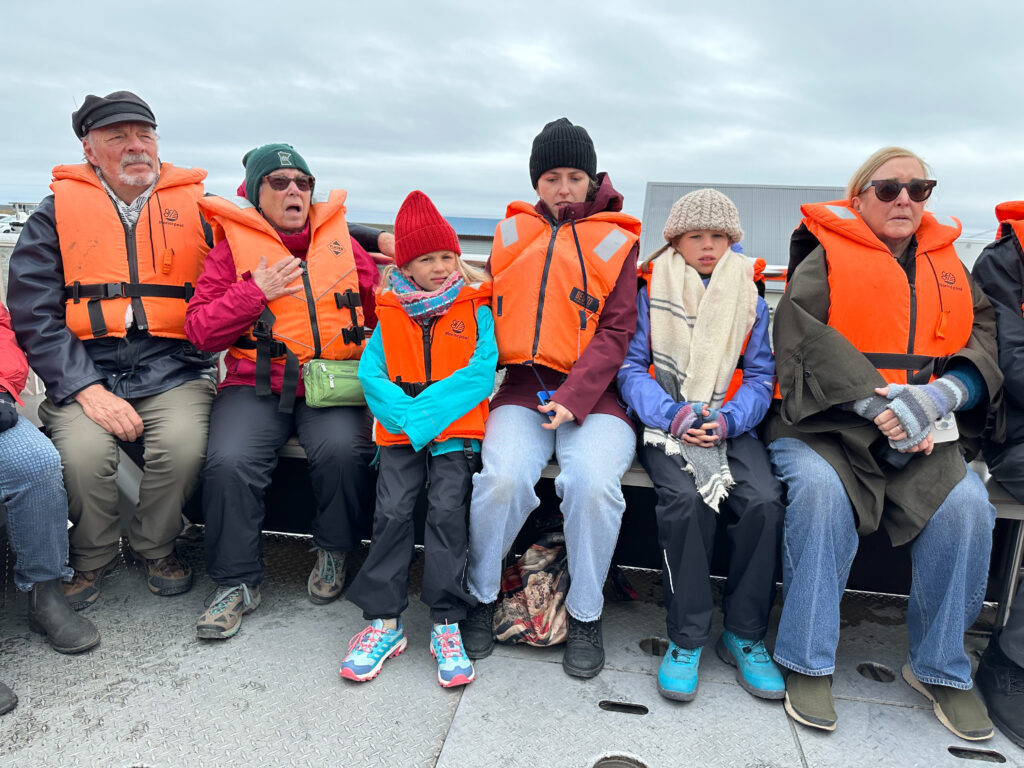
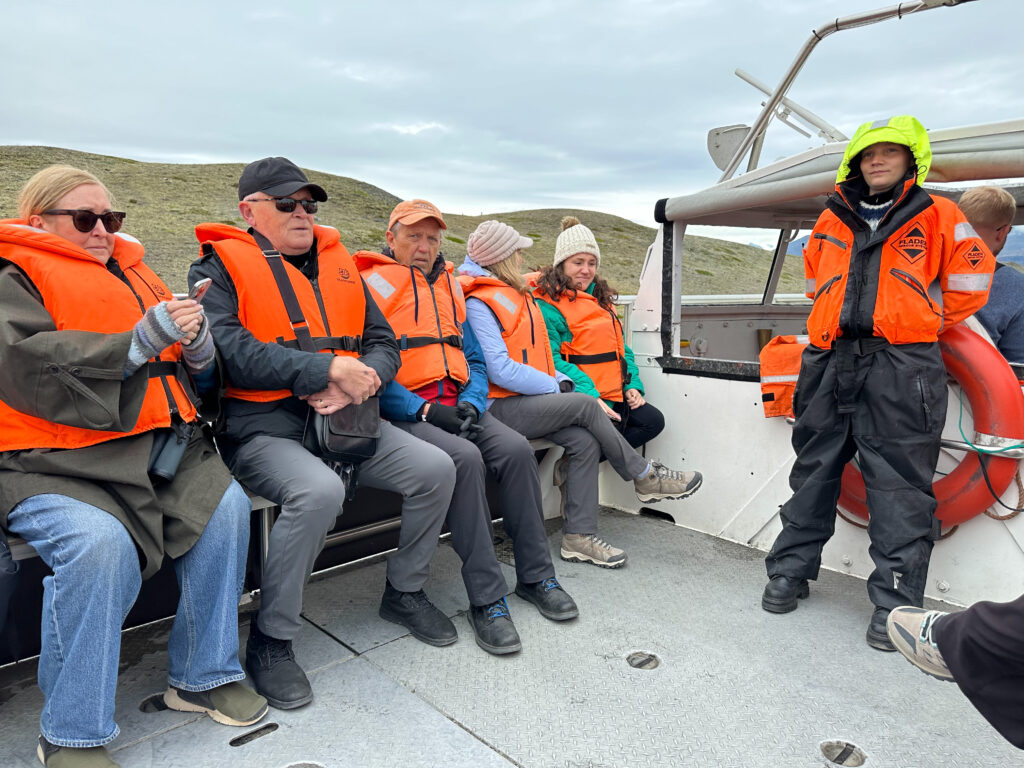
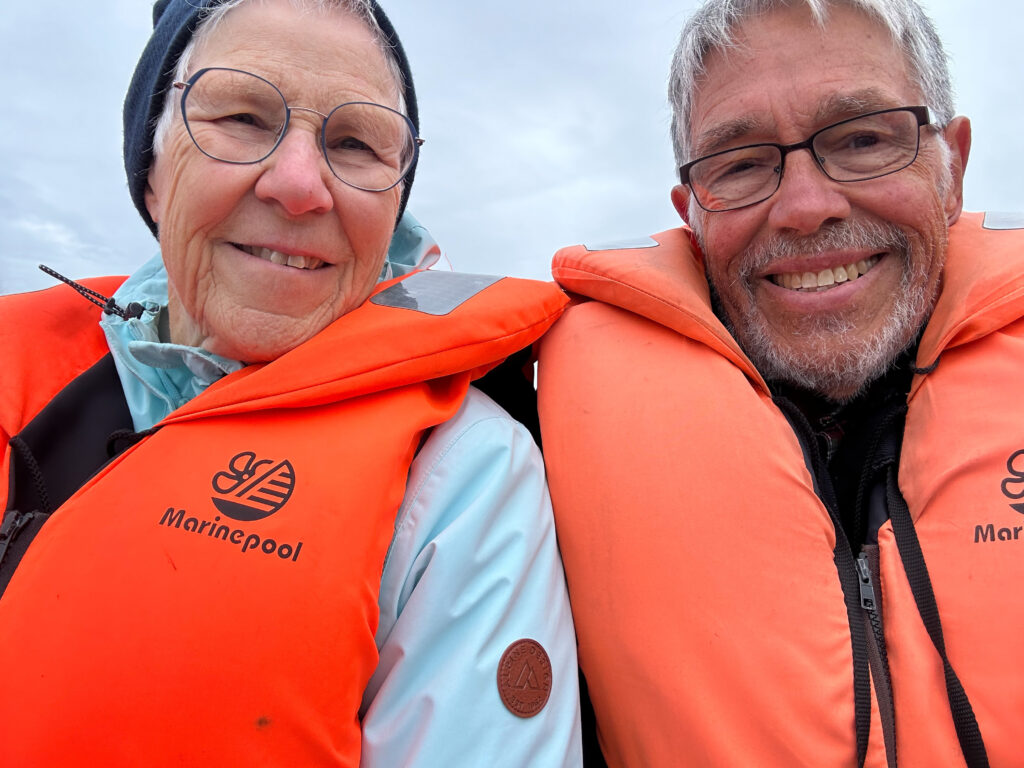

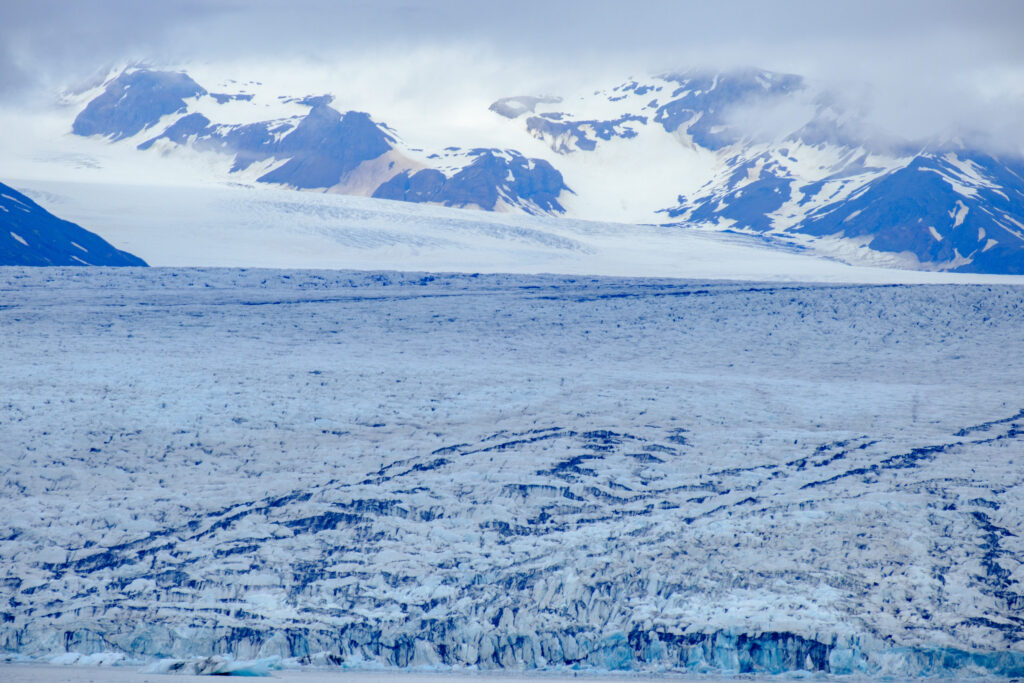
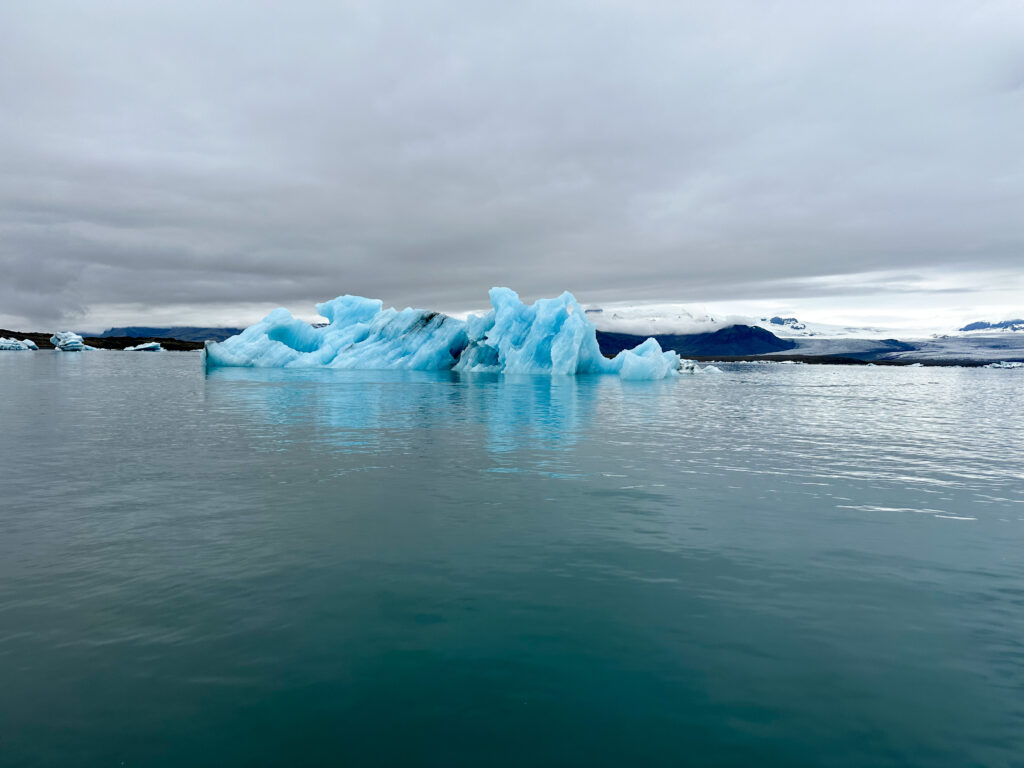

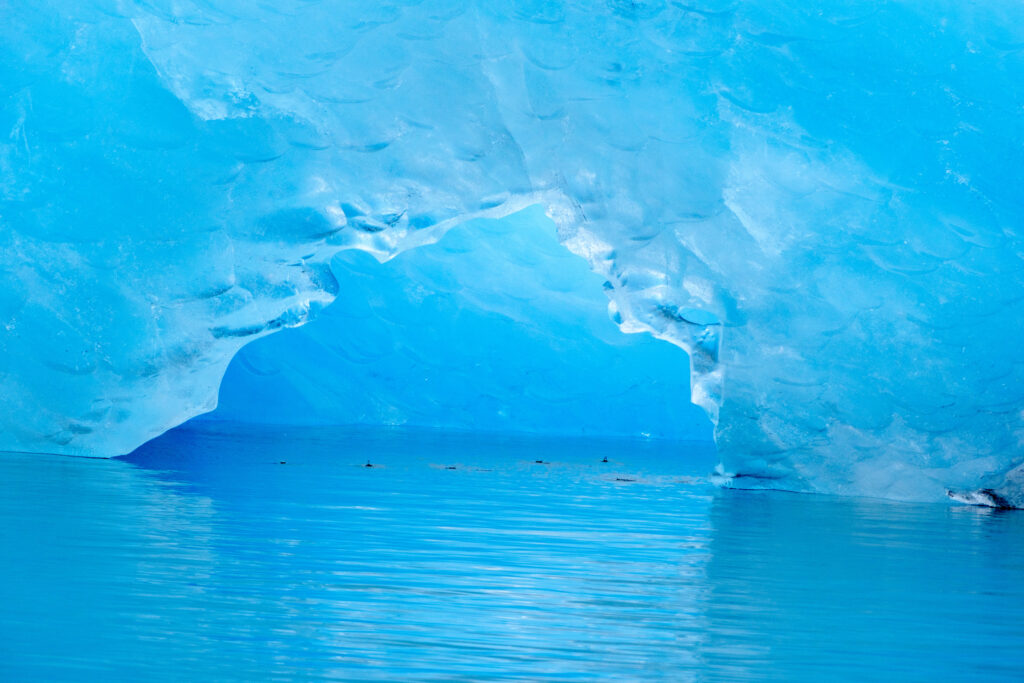
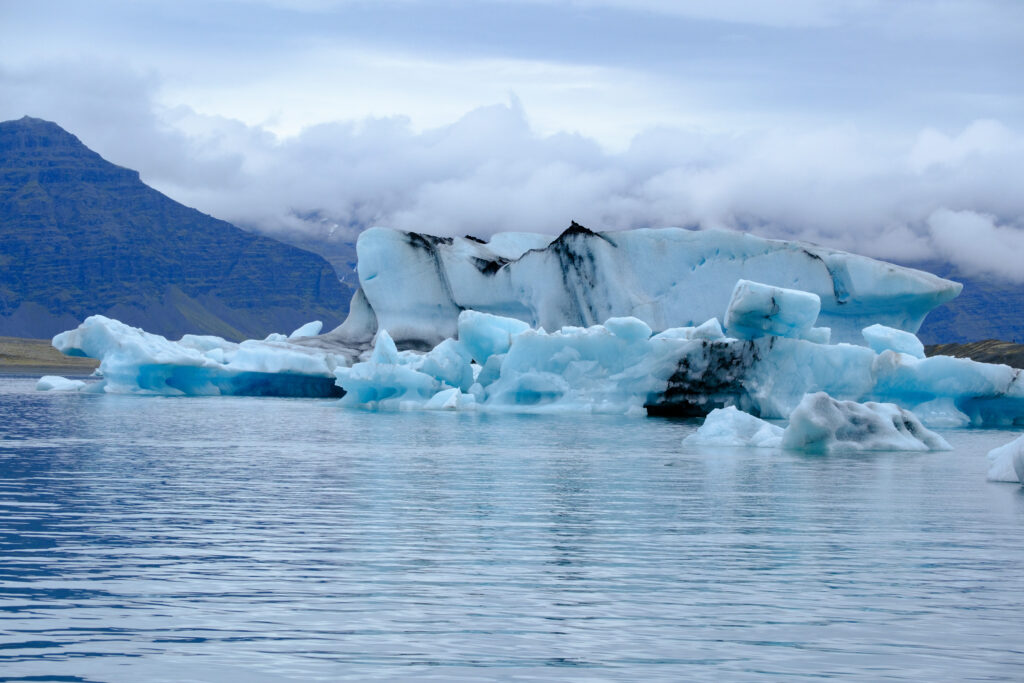
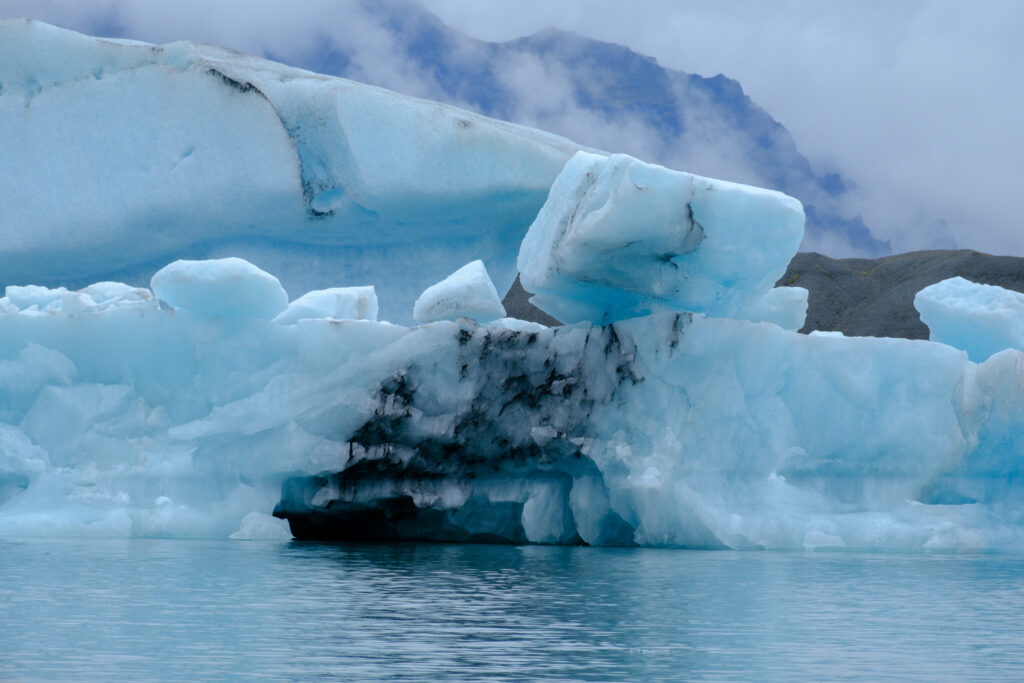
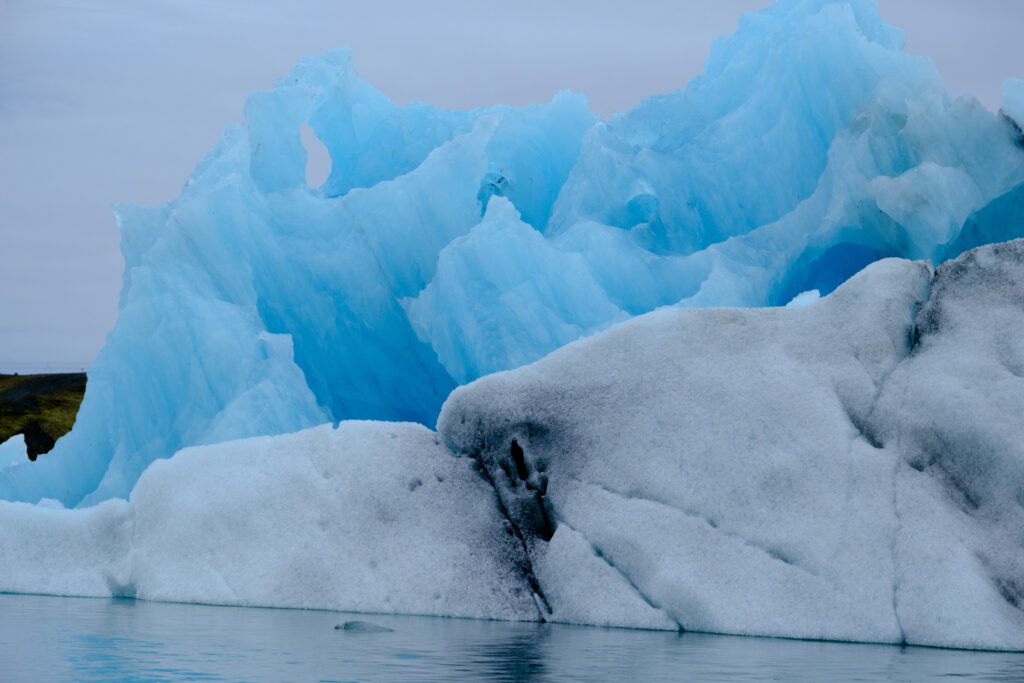
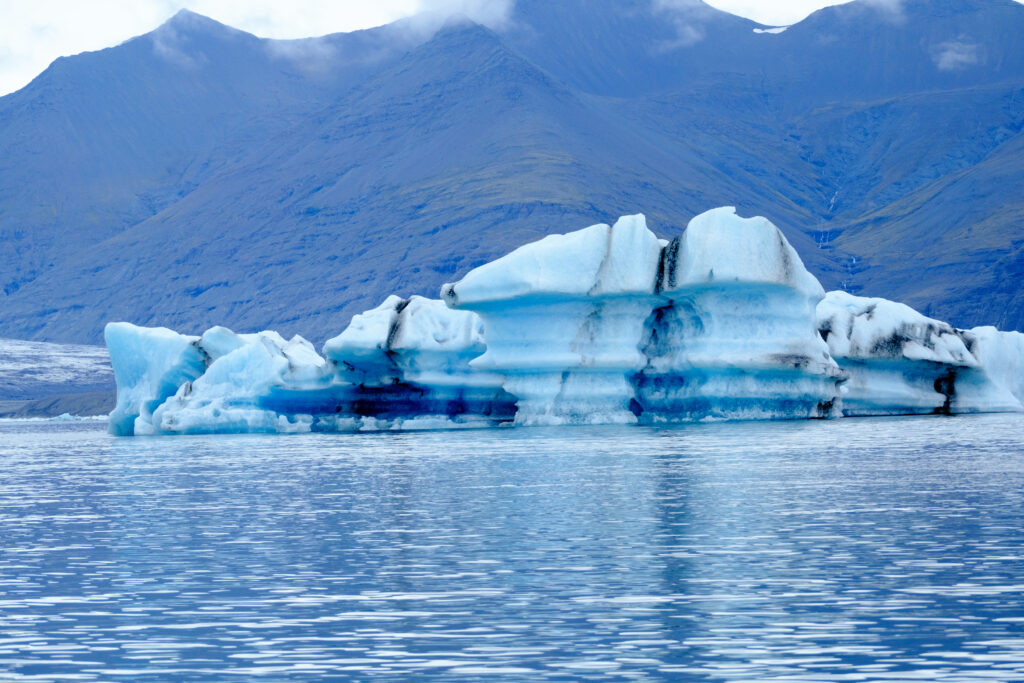
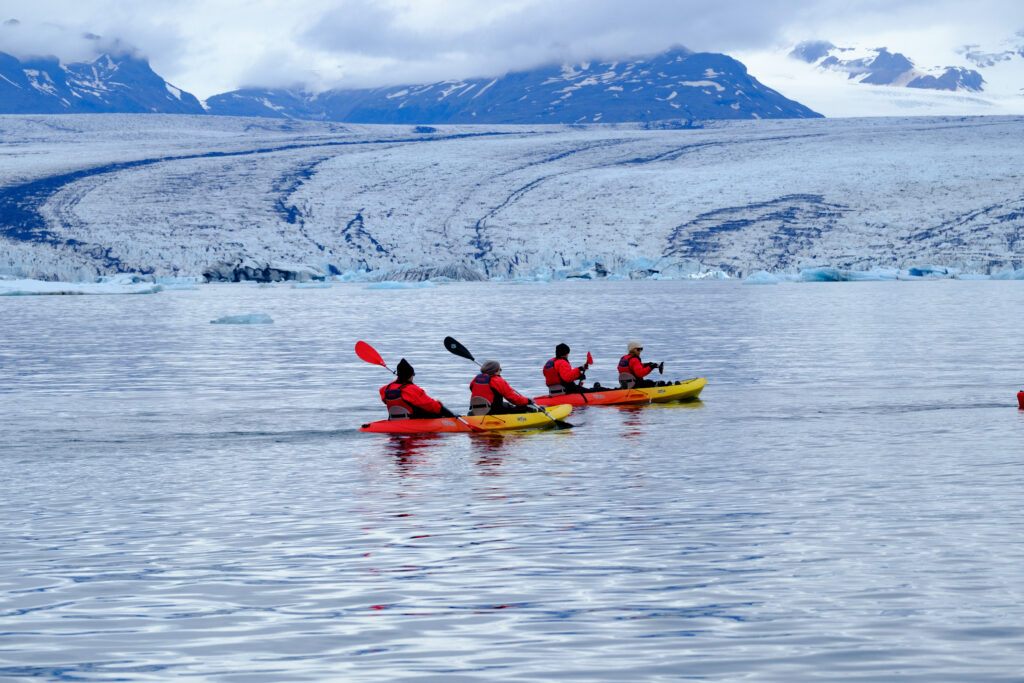
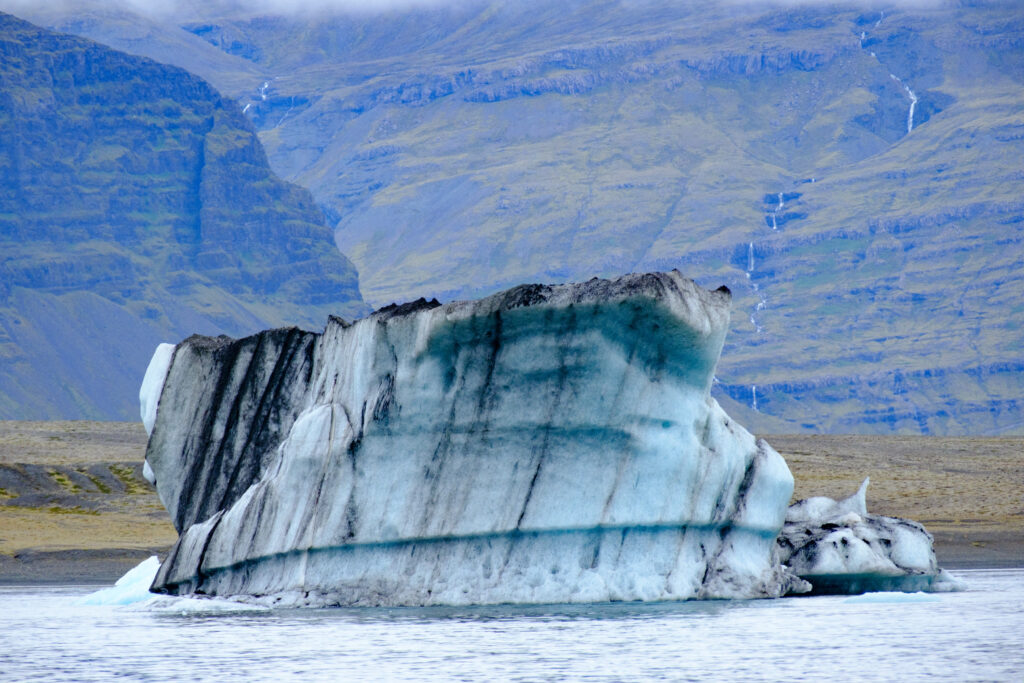

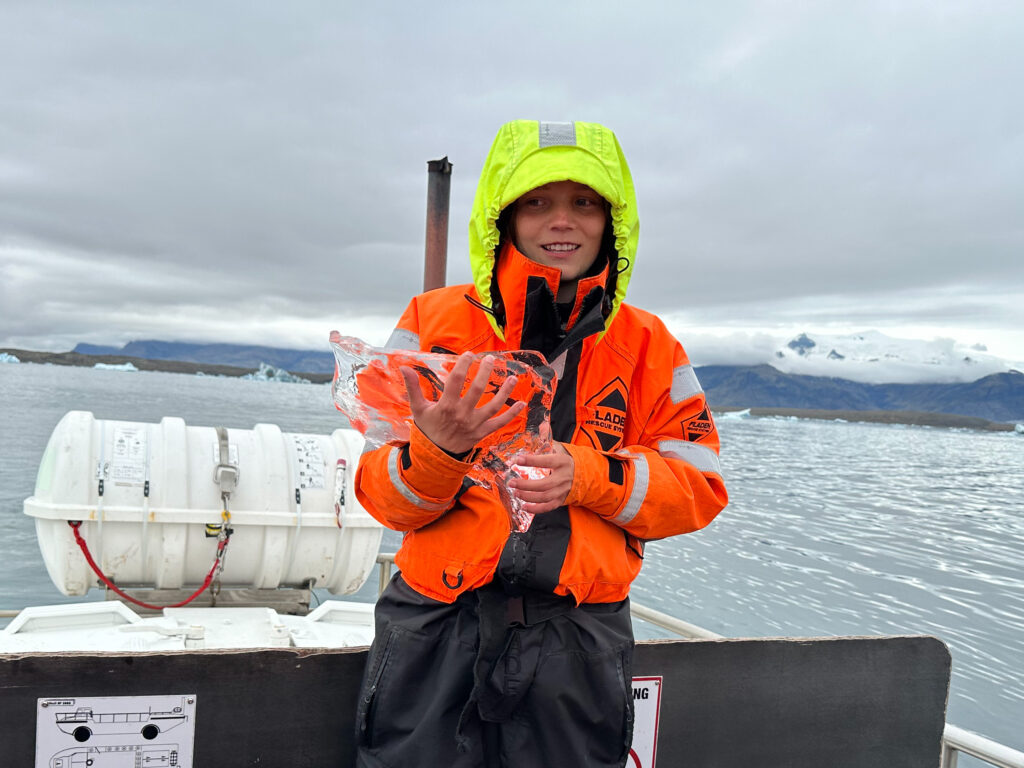
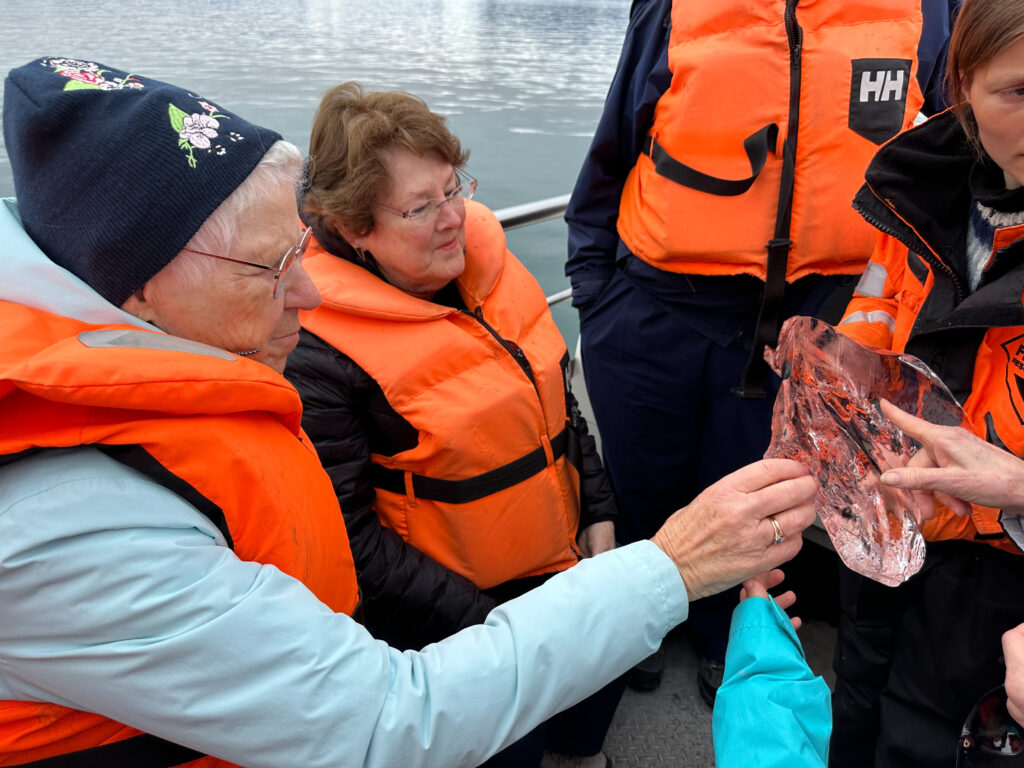
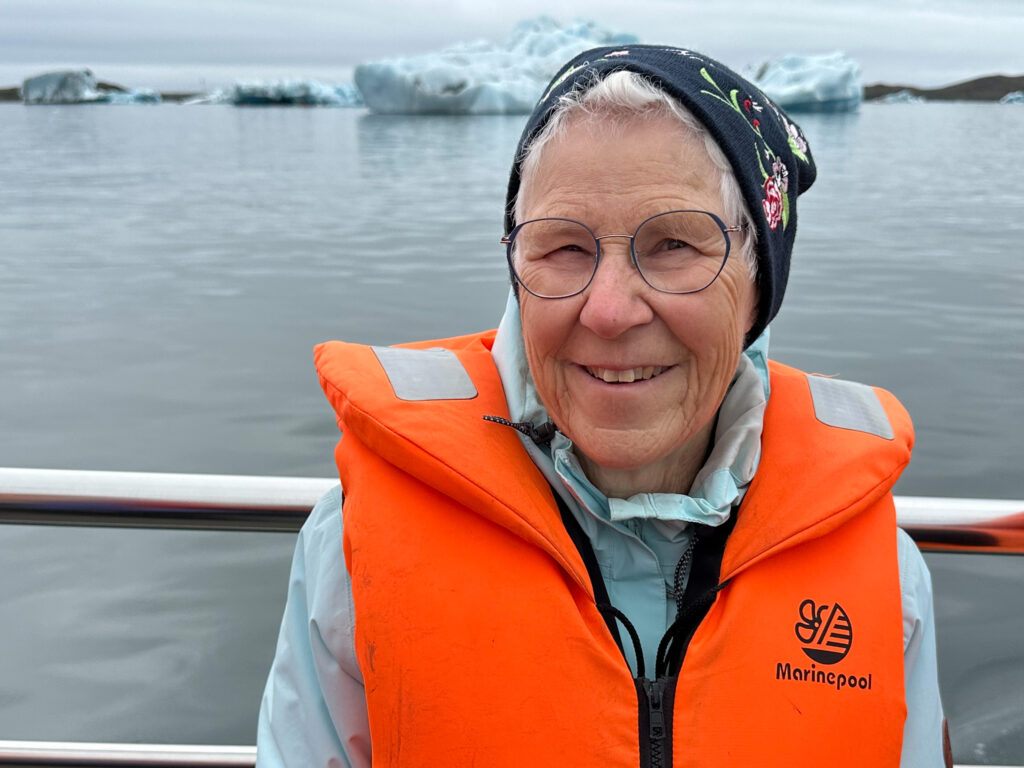
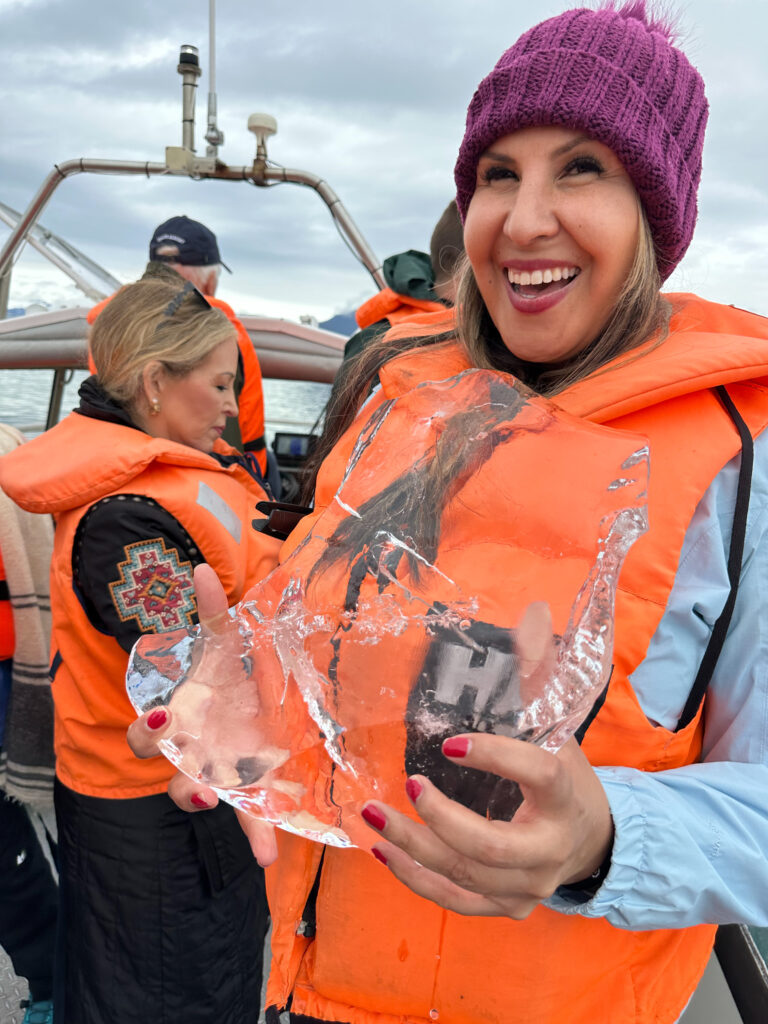
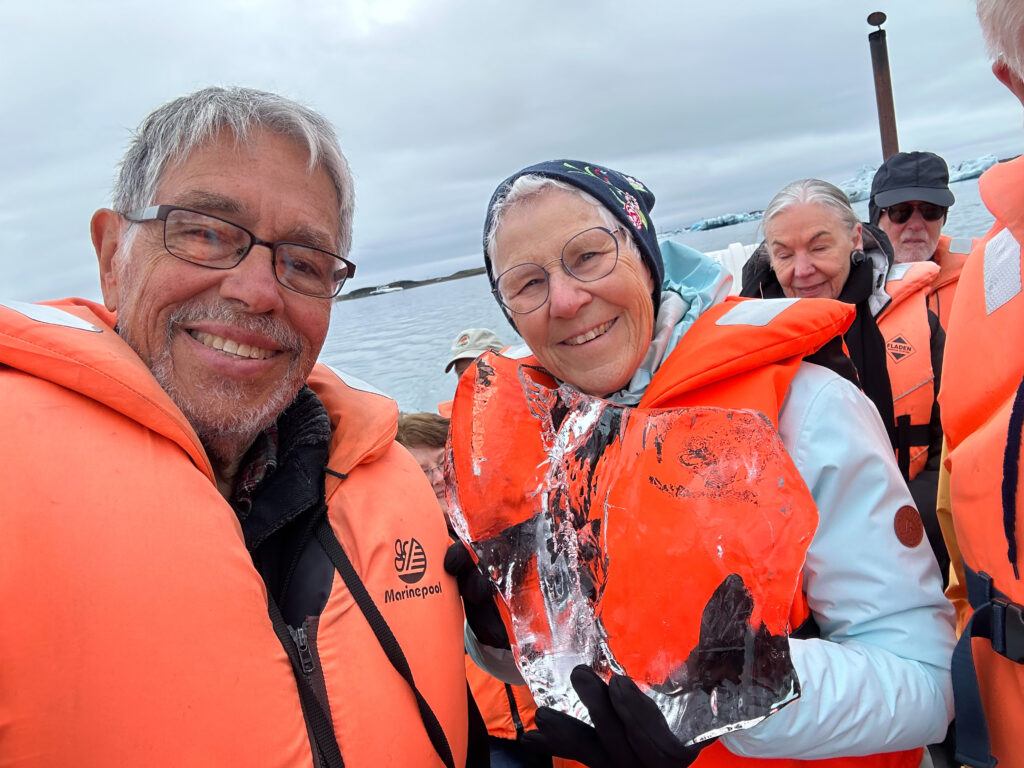
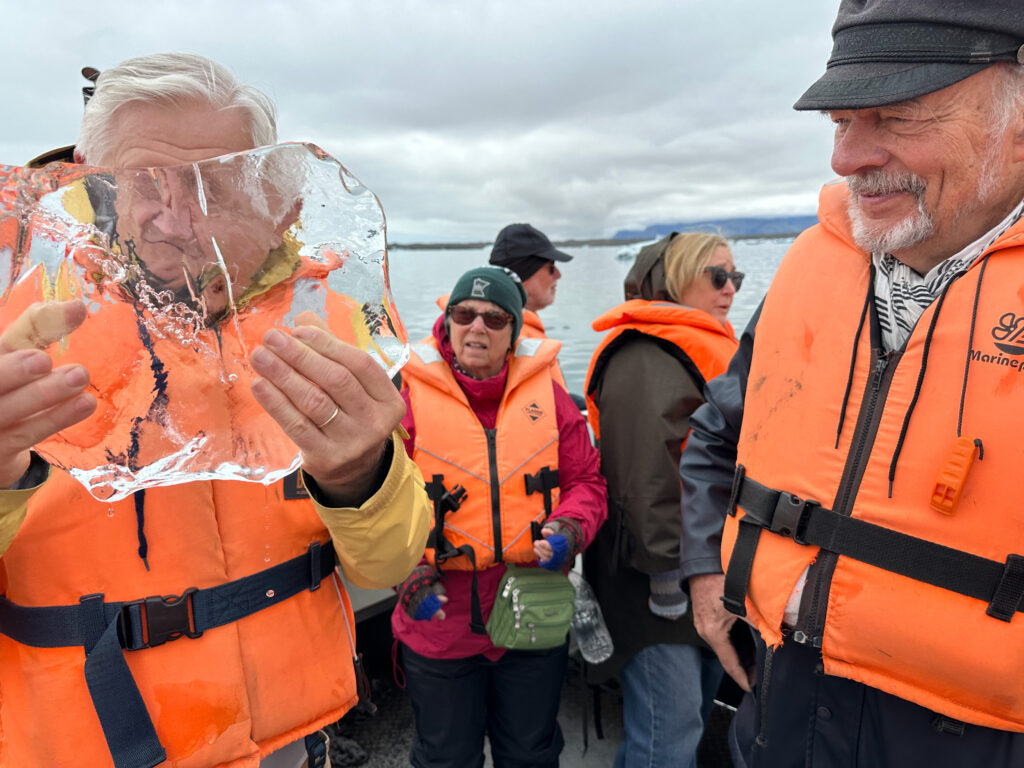

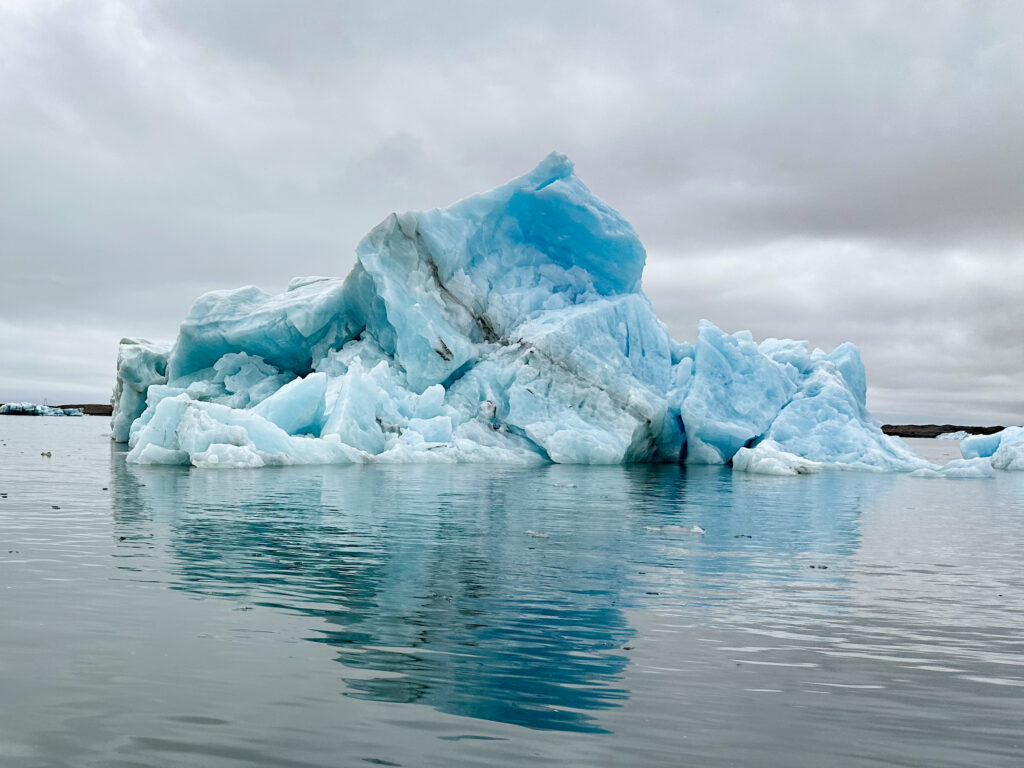

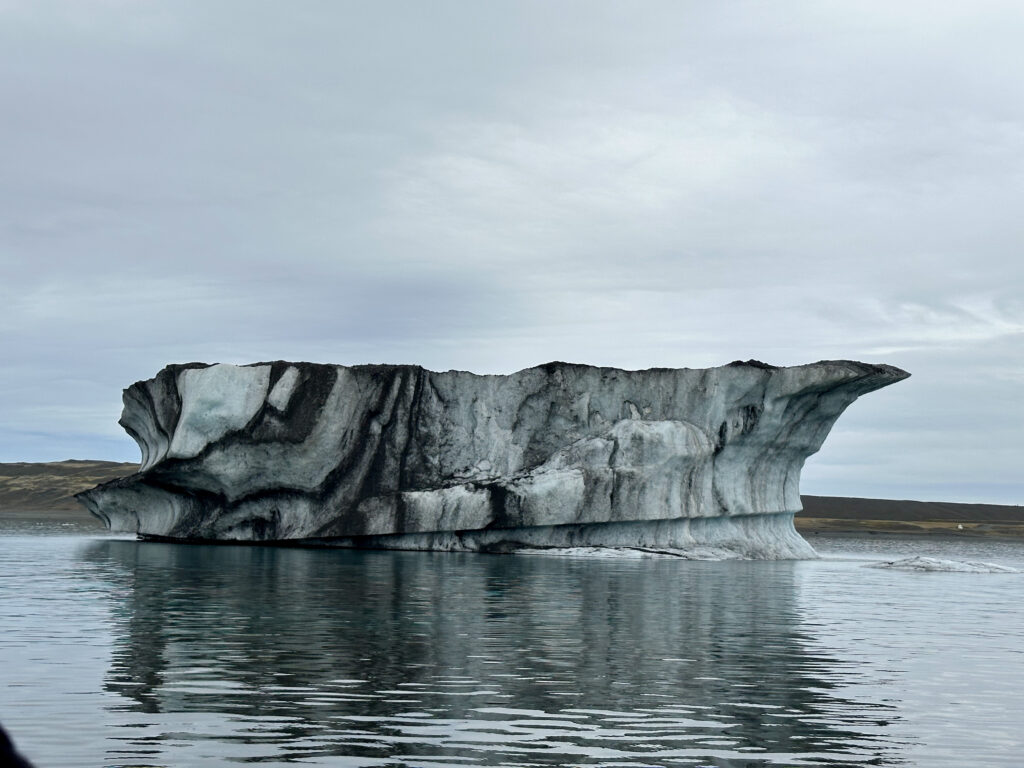

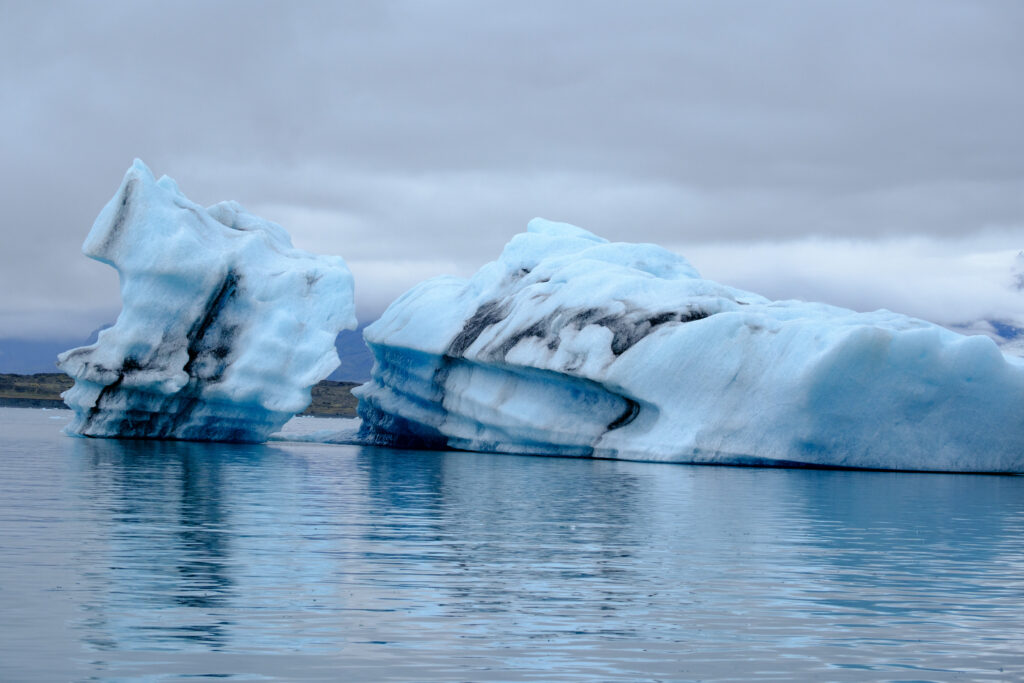
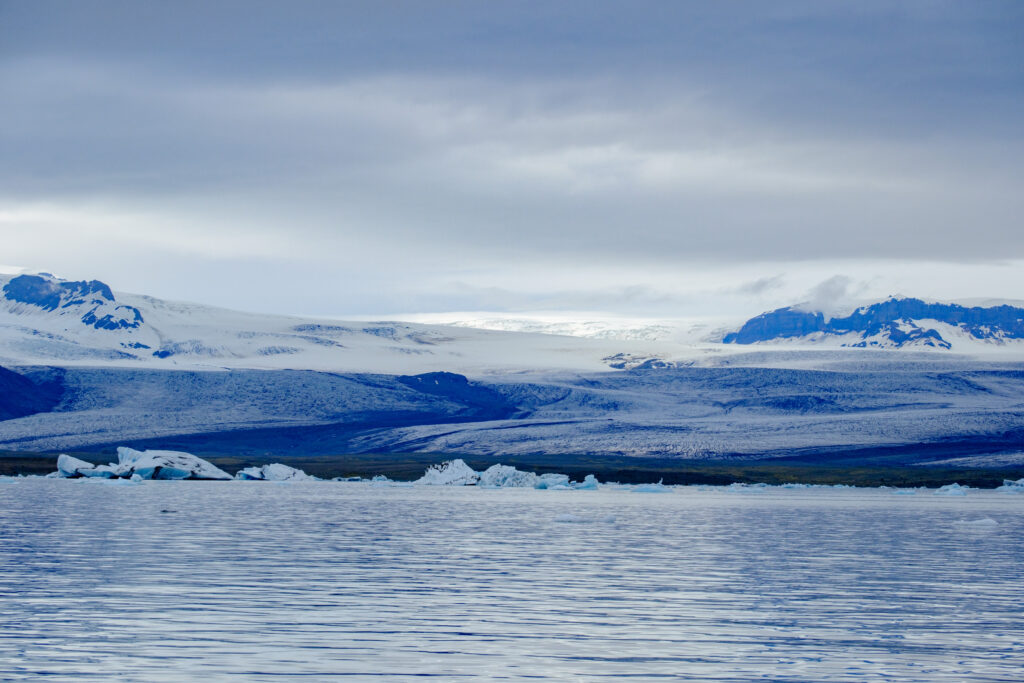
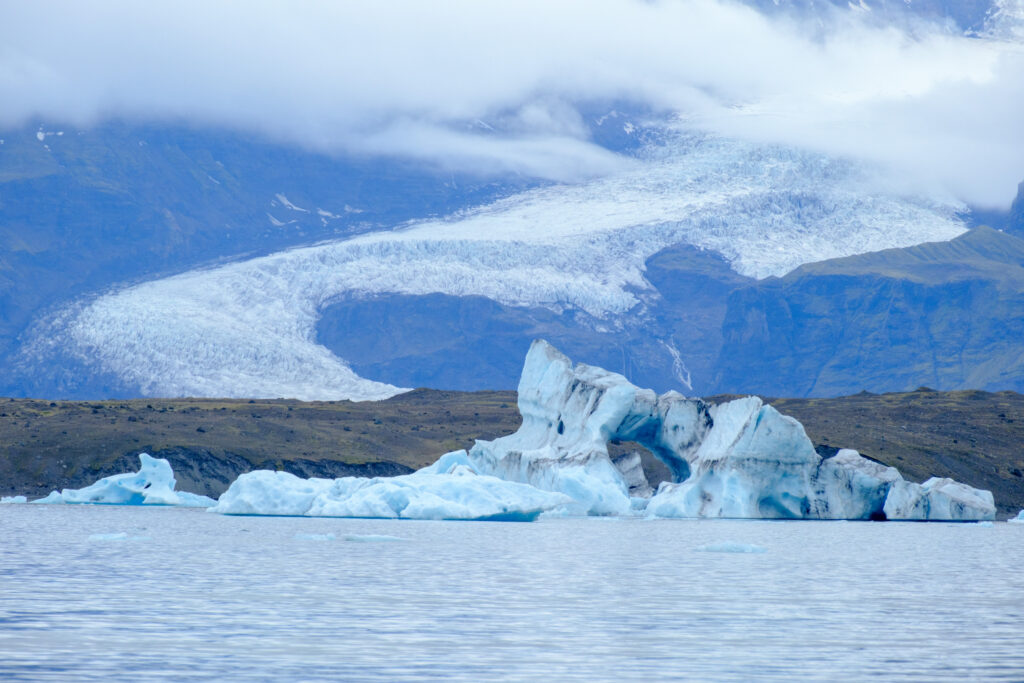
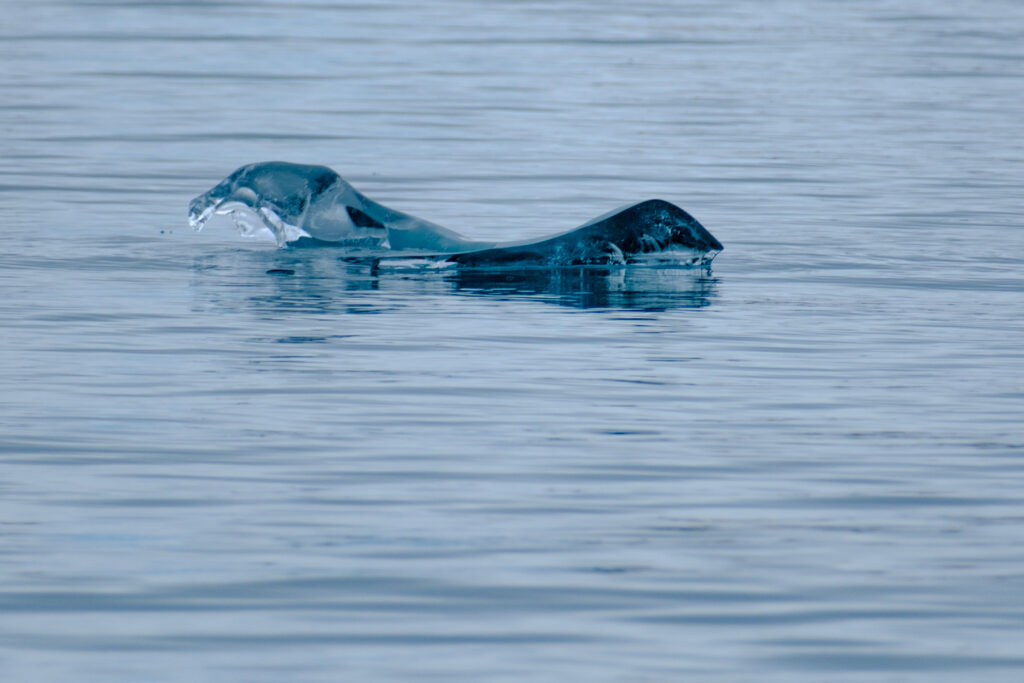
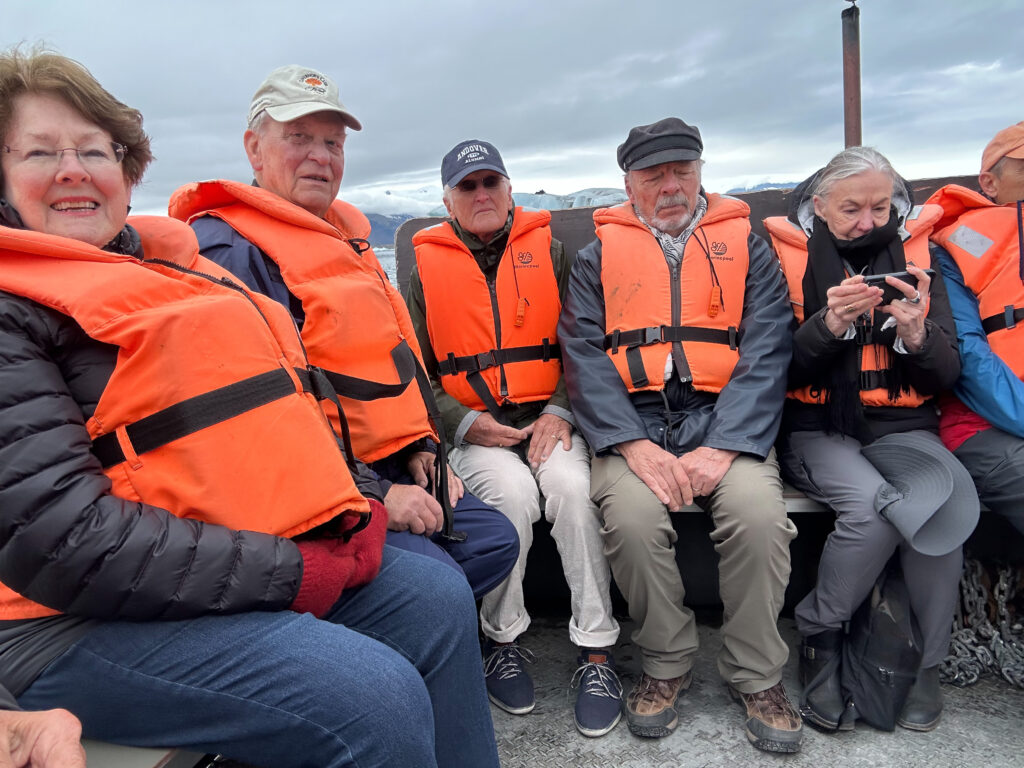
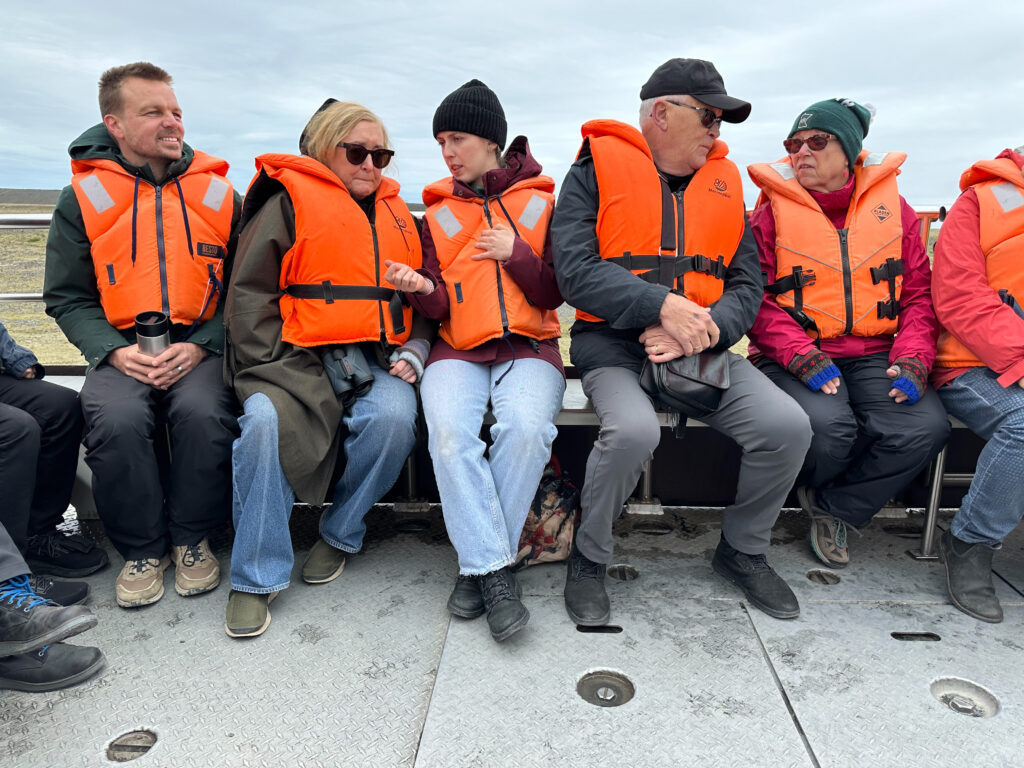
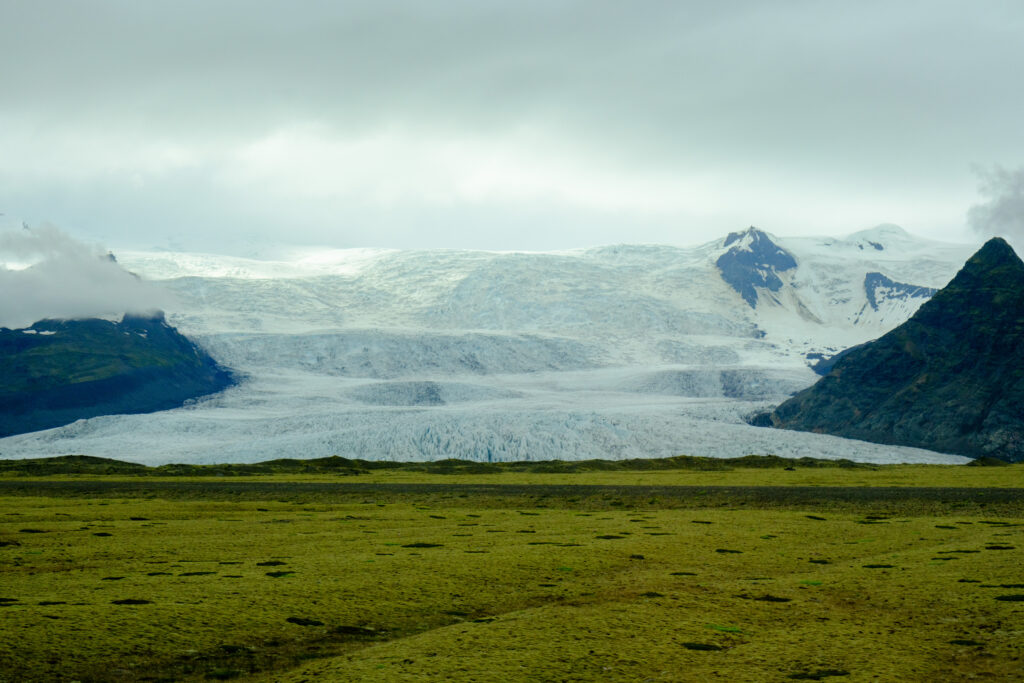
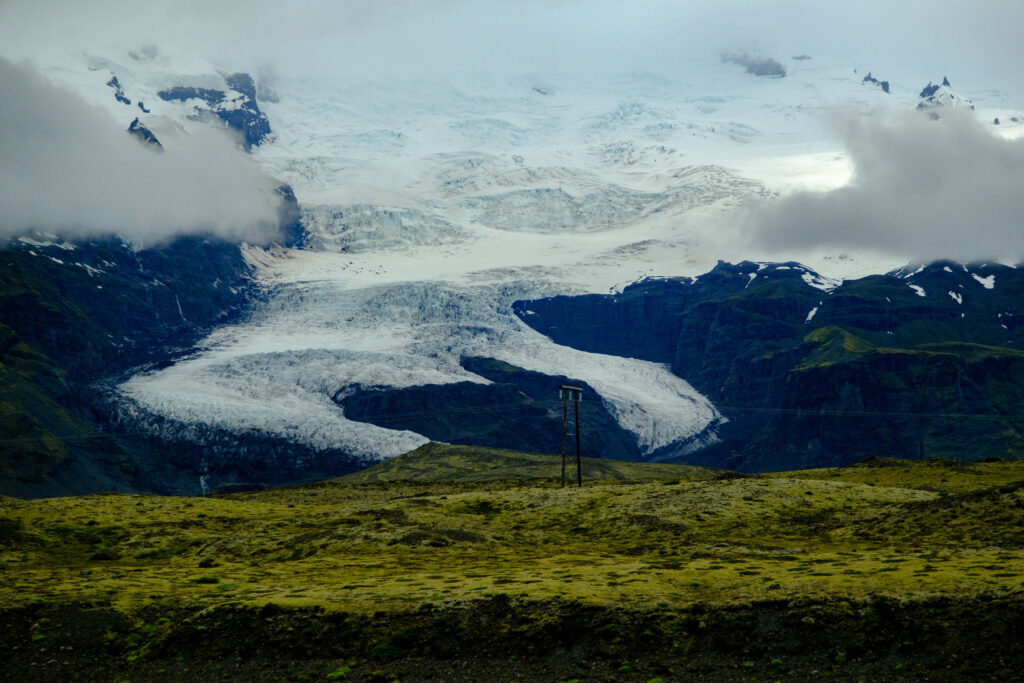
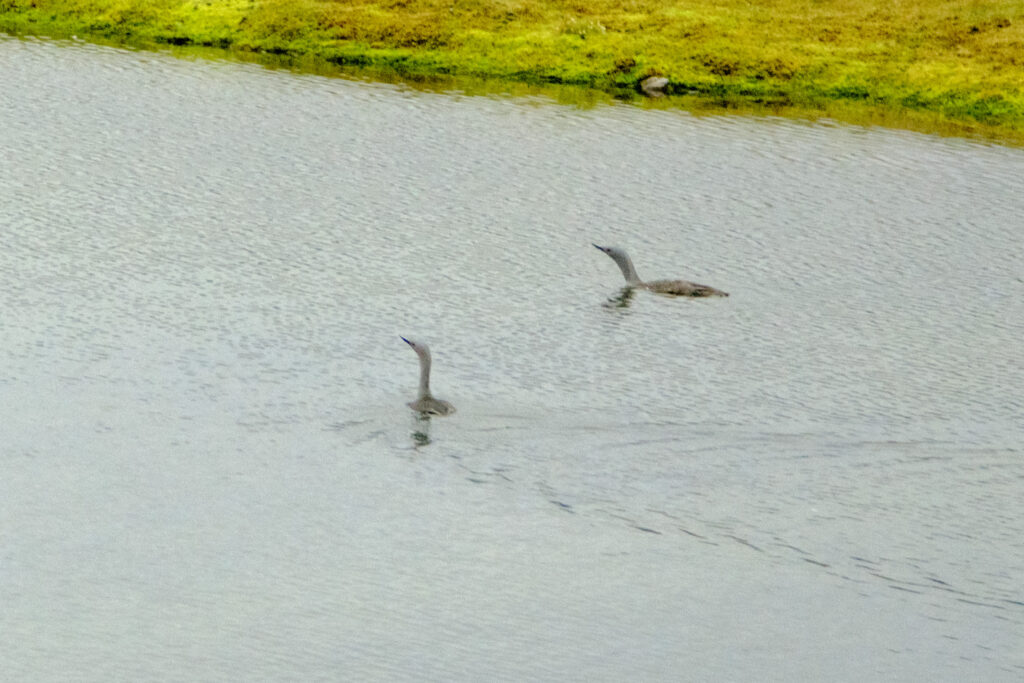
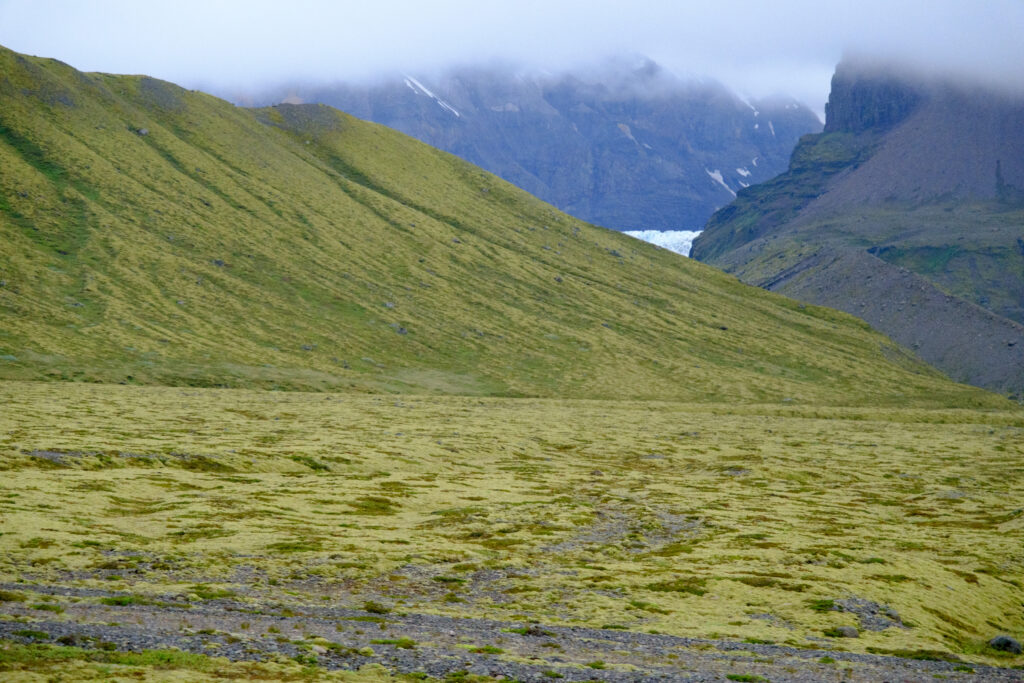
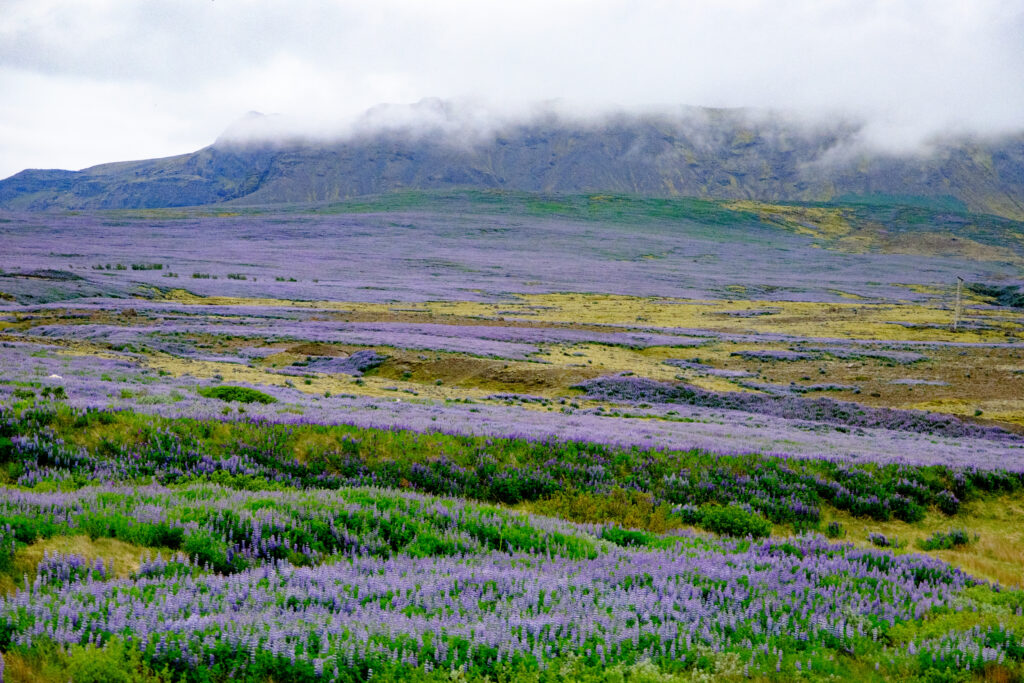
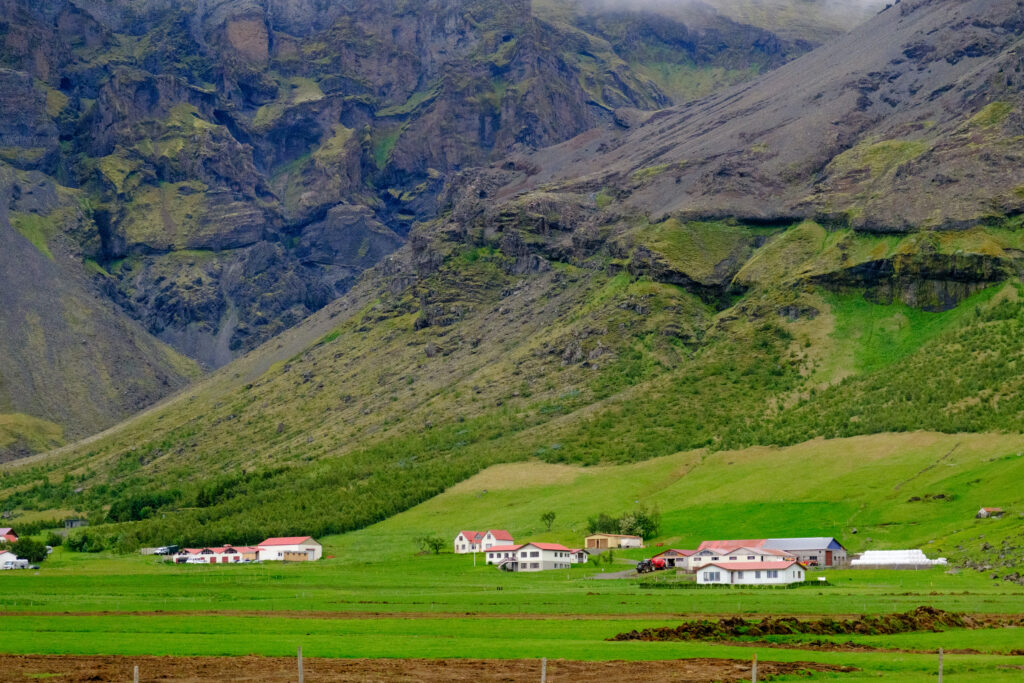
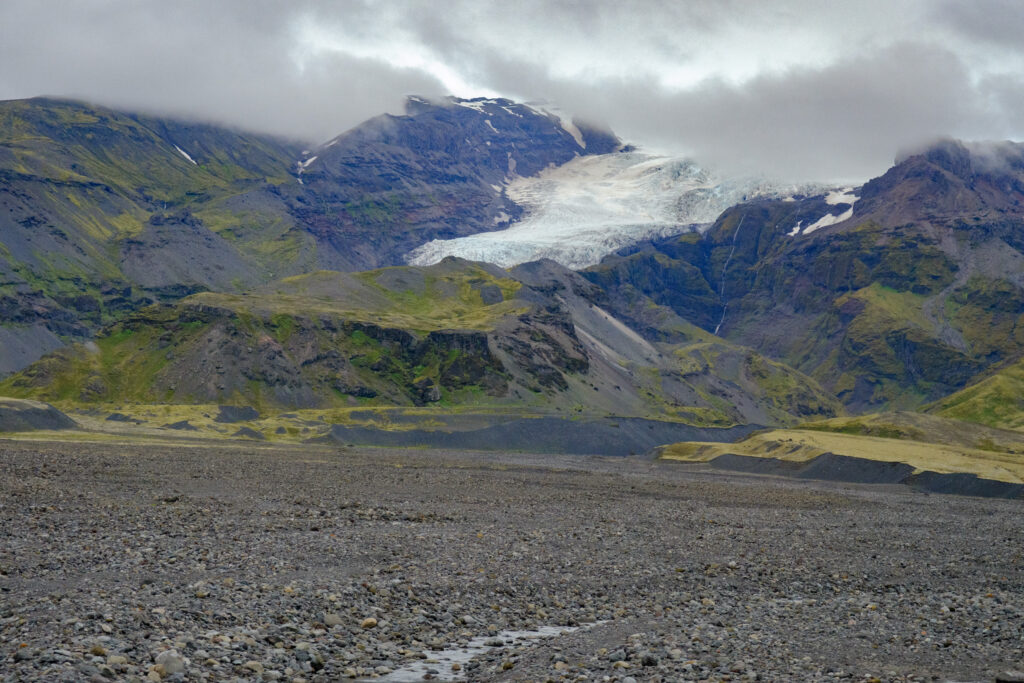
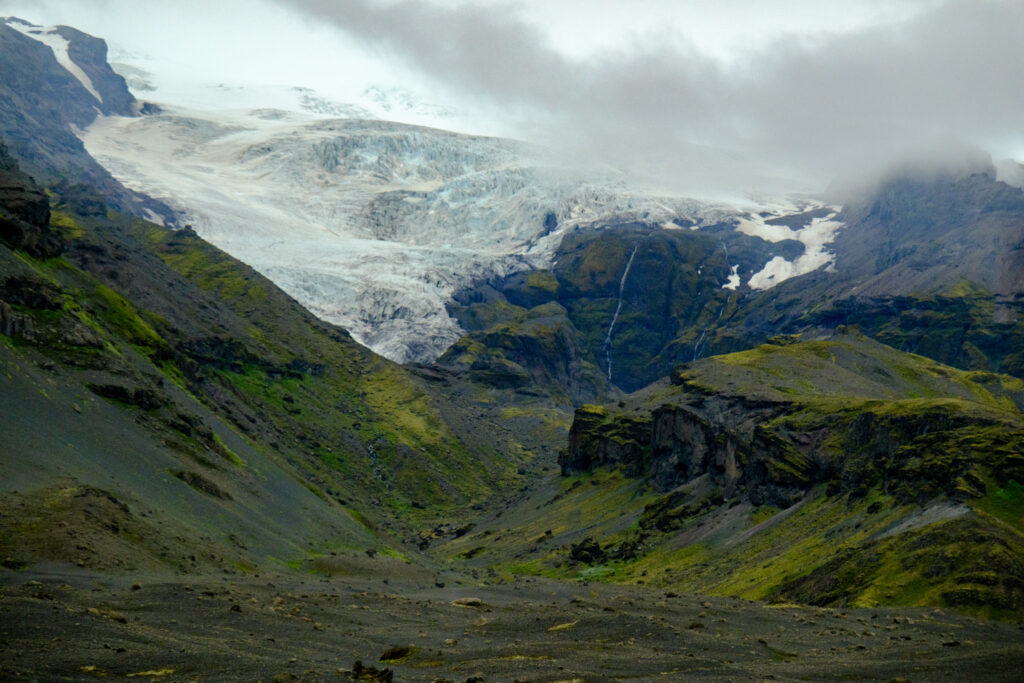

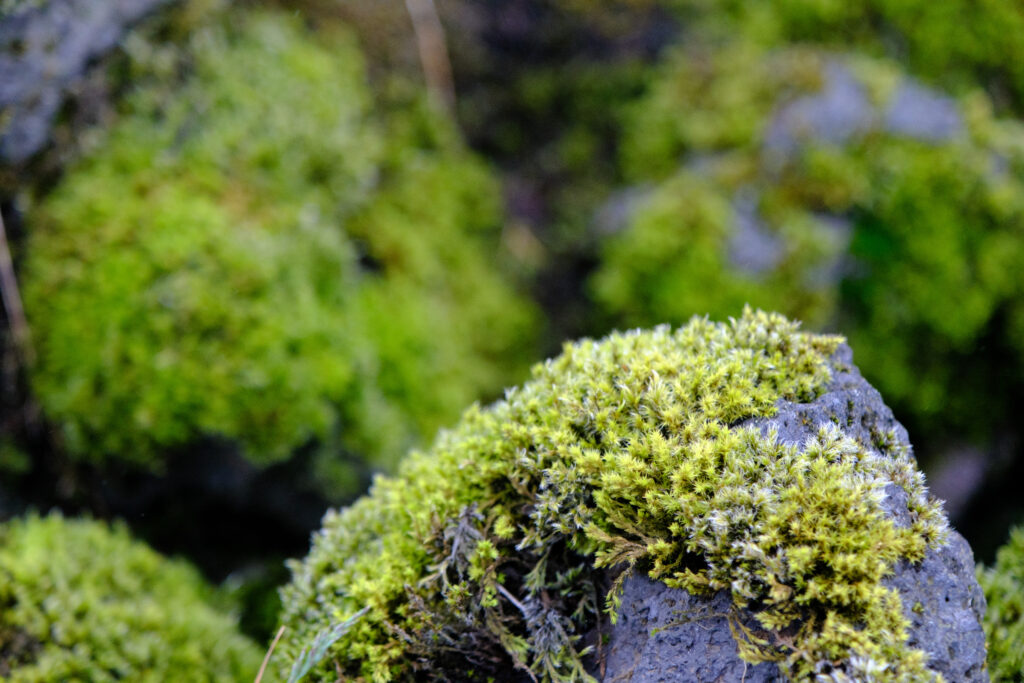
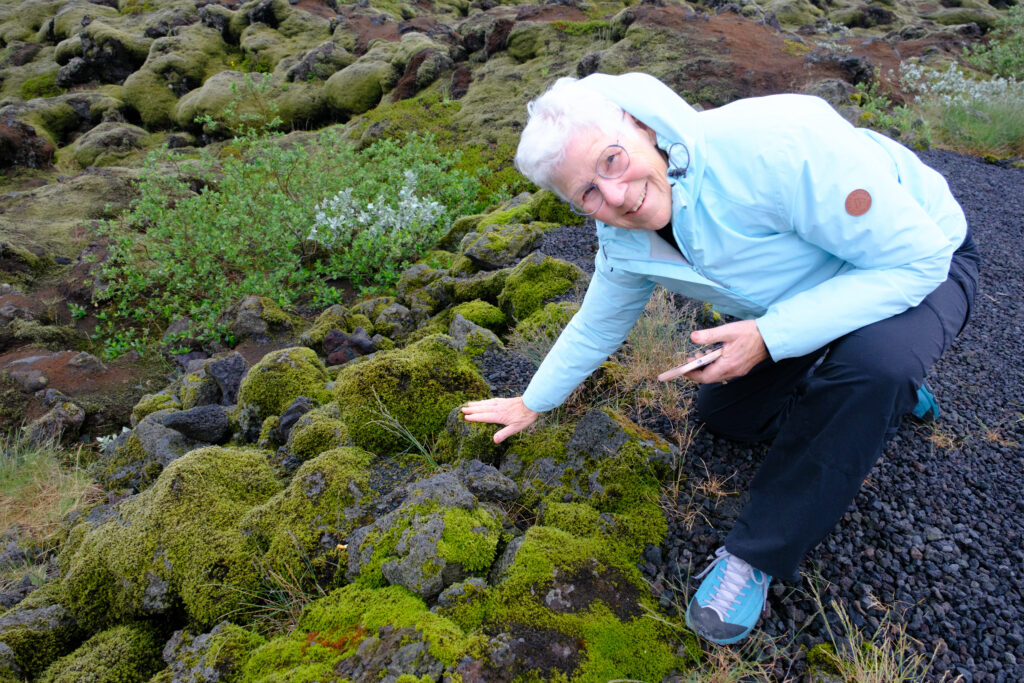
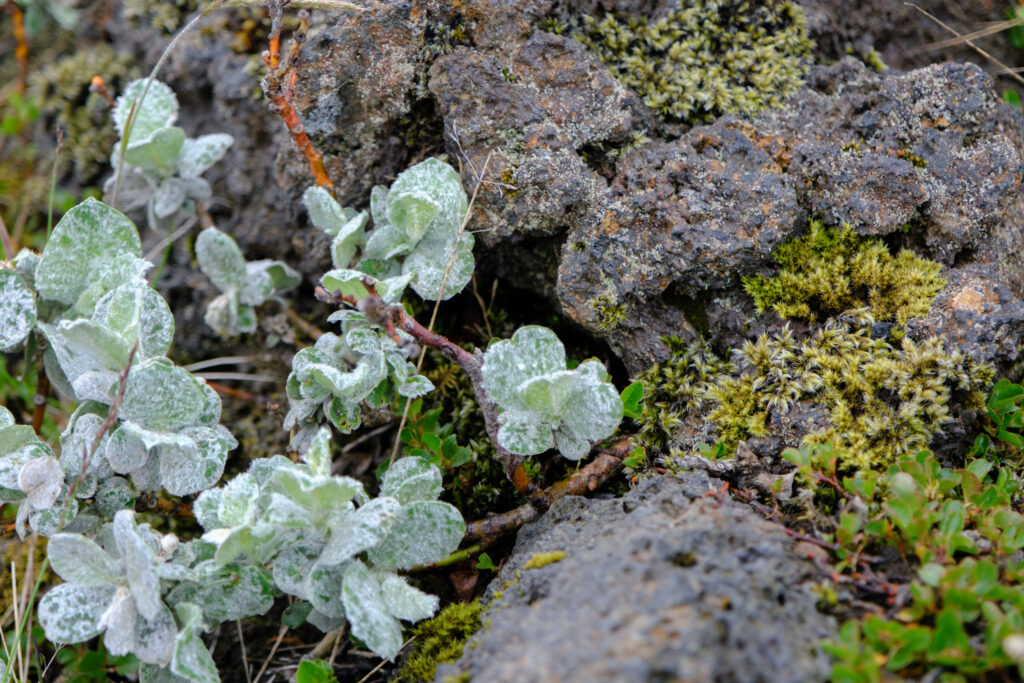
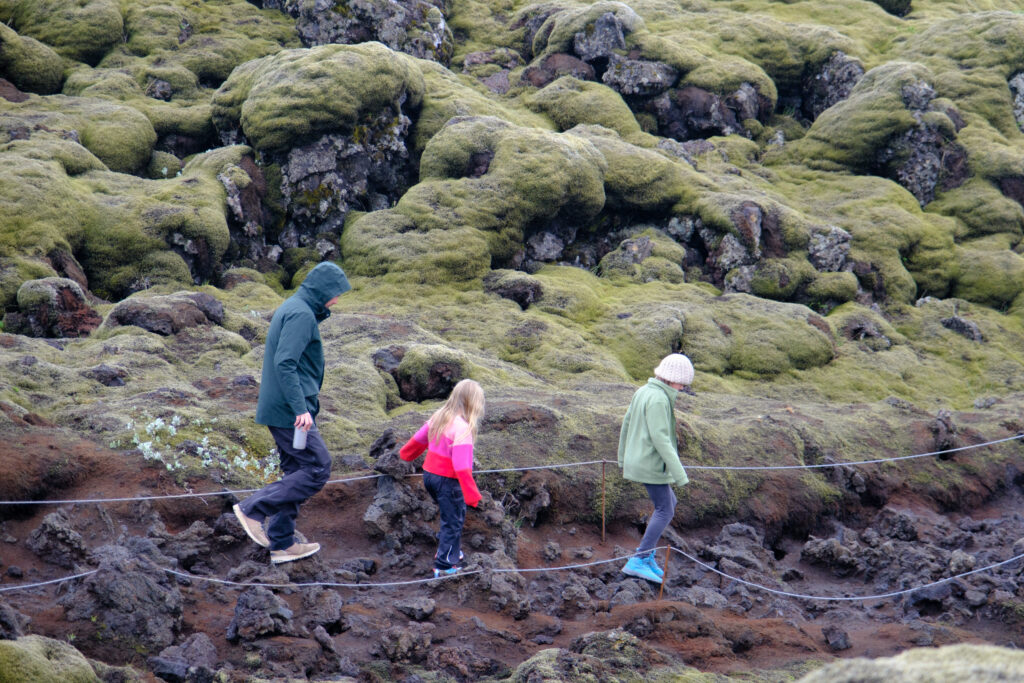
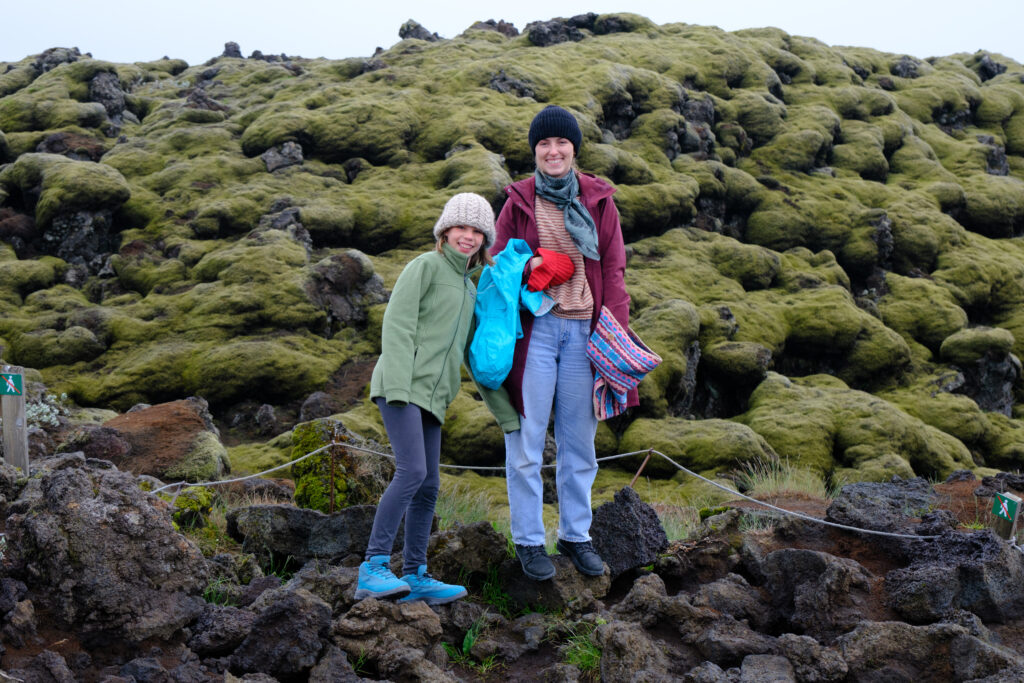
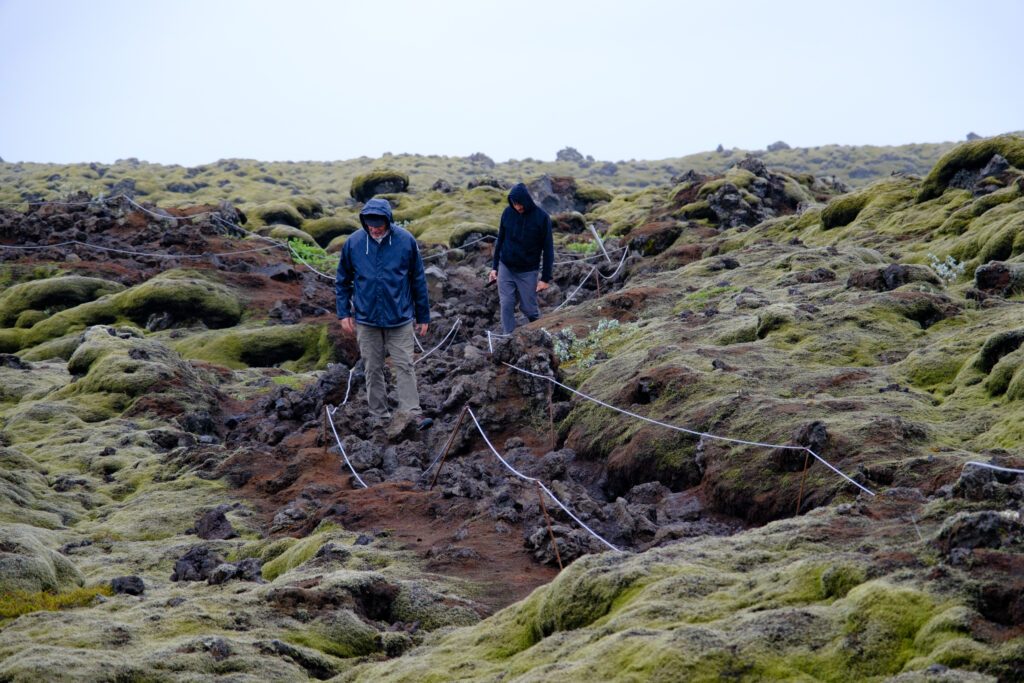
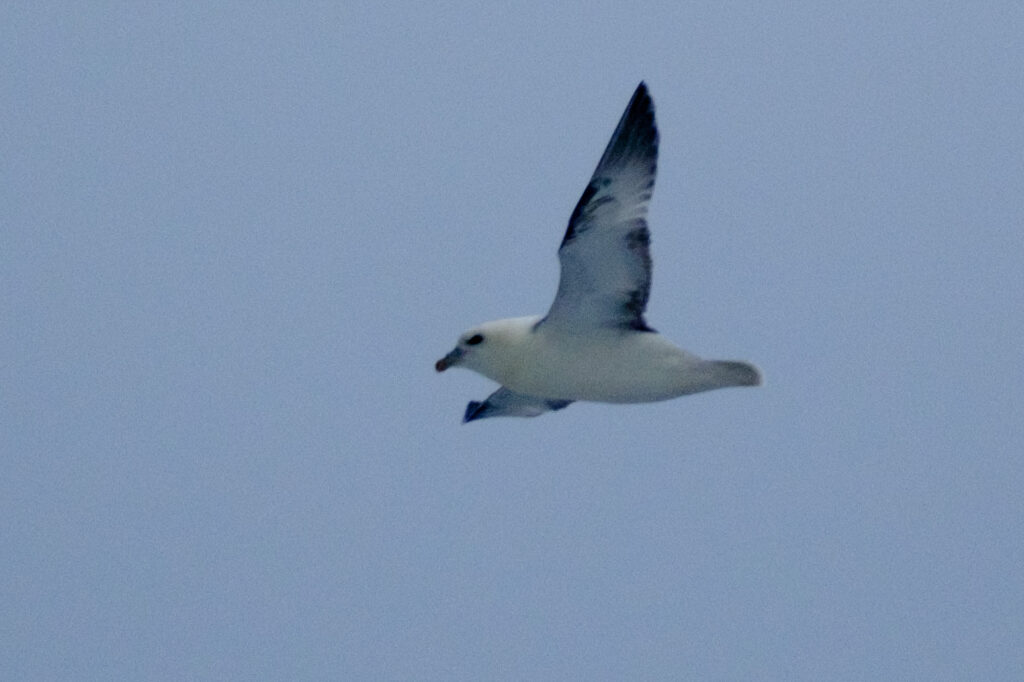
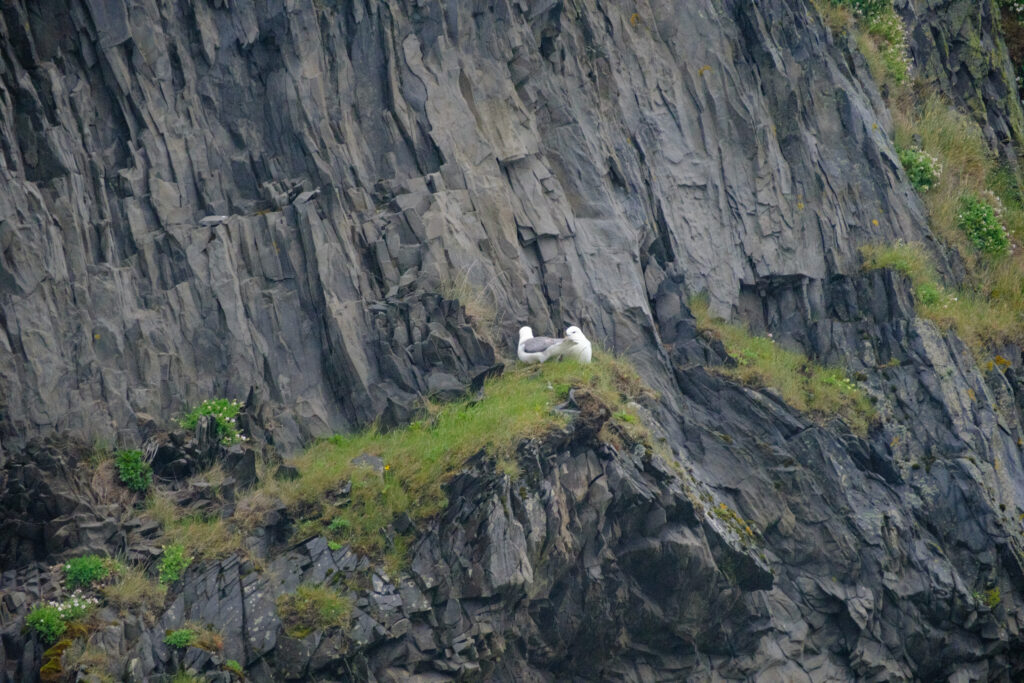
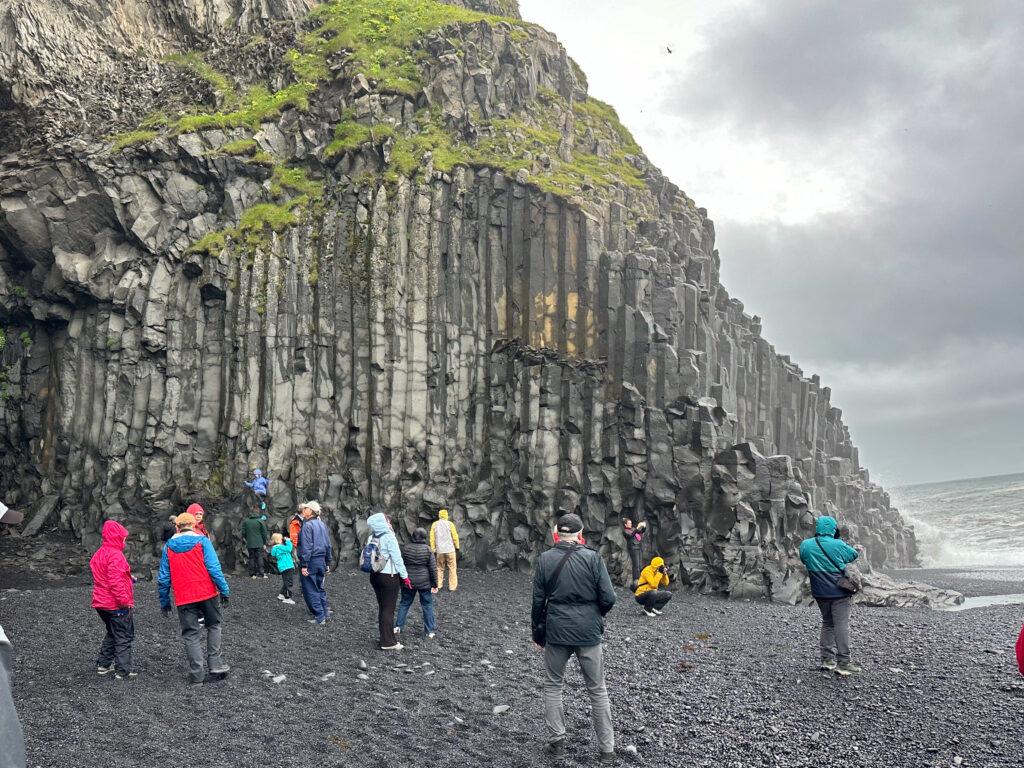

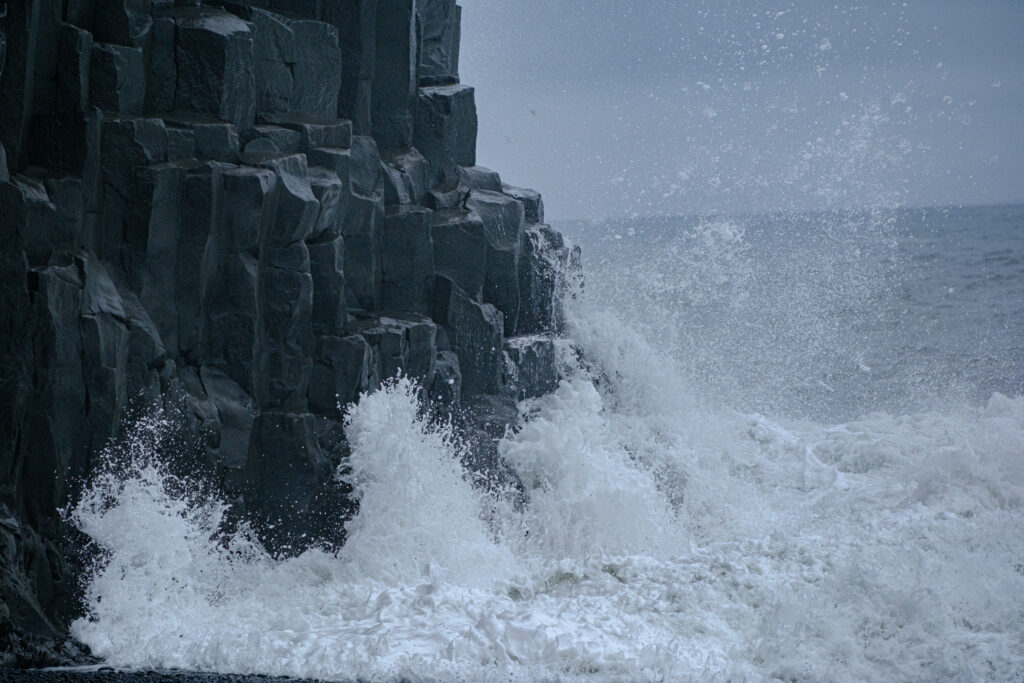
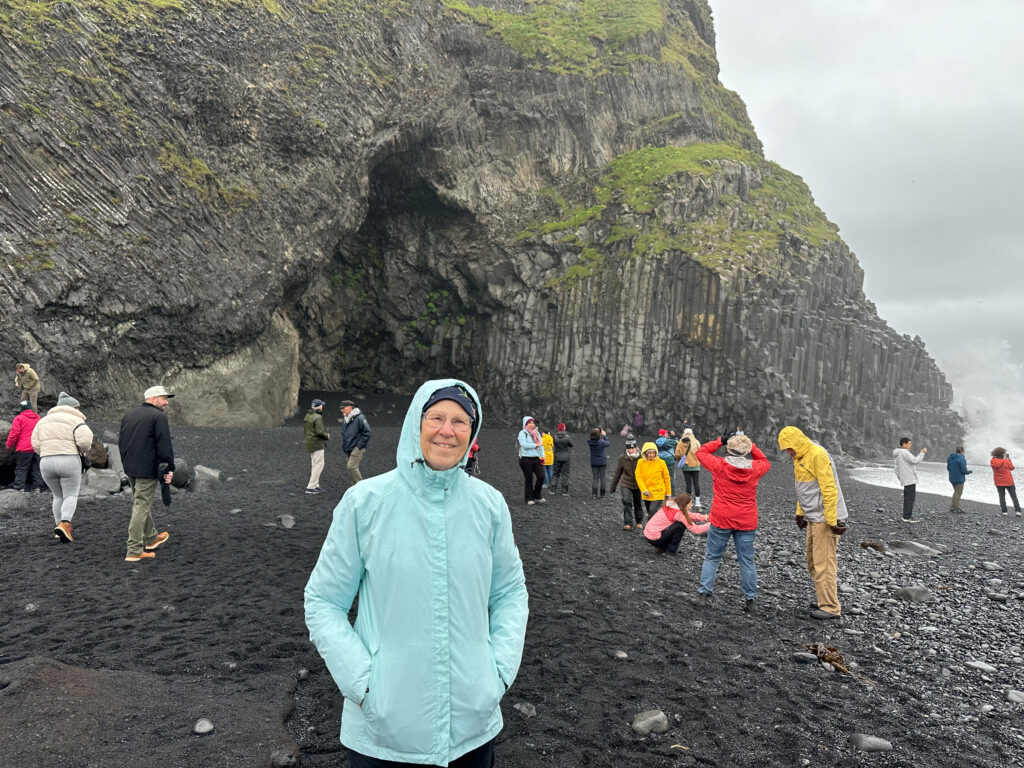
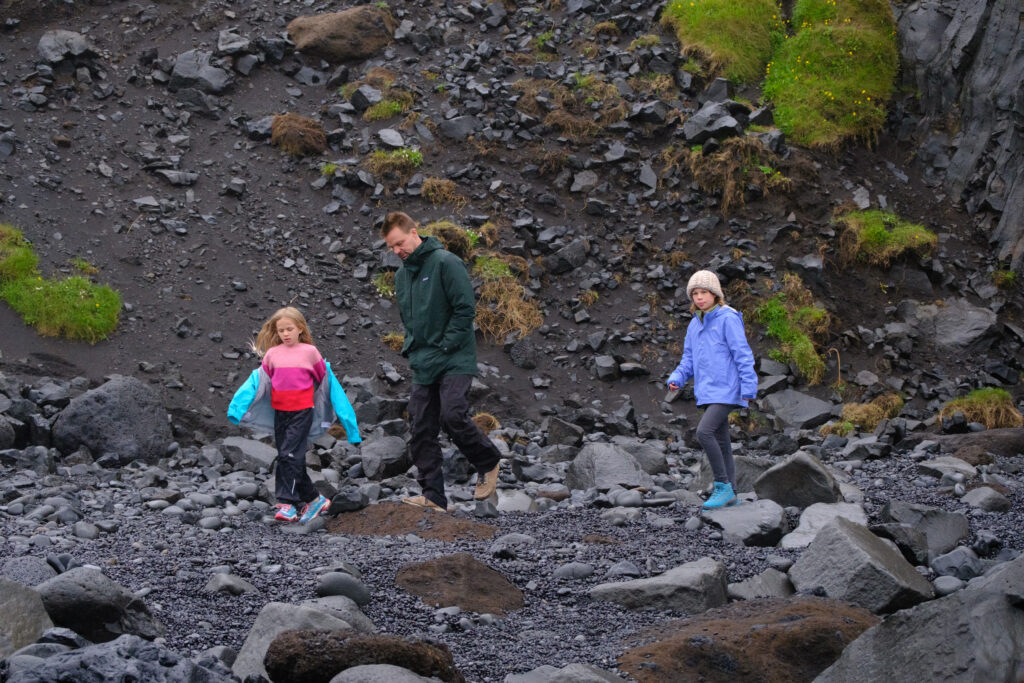
We were told that the black beach is where Clint Eastwoods movie about the war to take Iwo Jima was filmed.
Fun to imagine how they did the shoot
Beautiful pictures
Thanks!